February 15th, 2023
Finally the weather became better. Here the view from our hotel room at dawn.
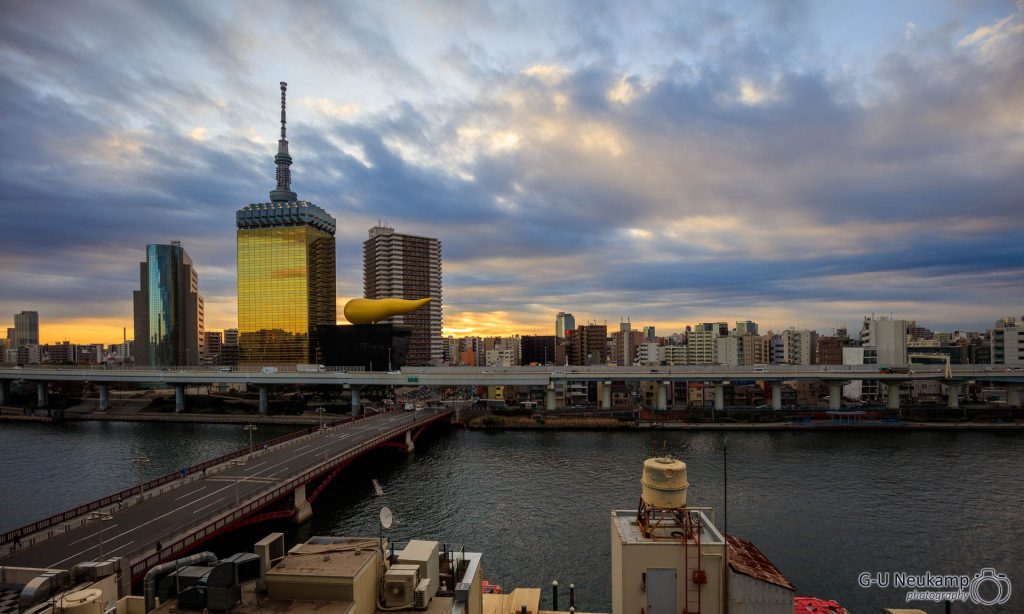
Today we made a trip to the Meiji Shrine in Shibuya. On the way there, we crossed a large park and discovered the first flowering trees. We are still divided whether it are really already cherry blossoms or plum blossoms - it does not matter, it was beautiful to look at. Especially worth seeing was also the wildlife in the trees. Bright green parrots (collared parakeets) were sitting in them, enjoying the blossoms. This made a great color contrast with the blue sky in the background. How good that I had taken my 100-400 zoom with me.
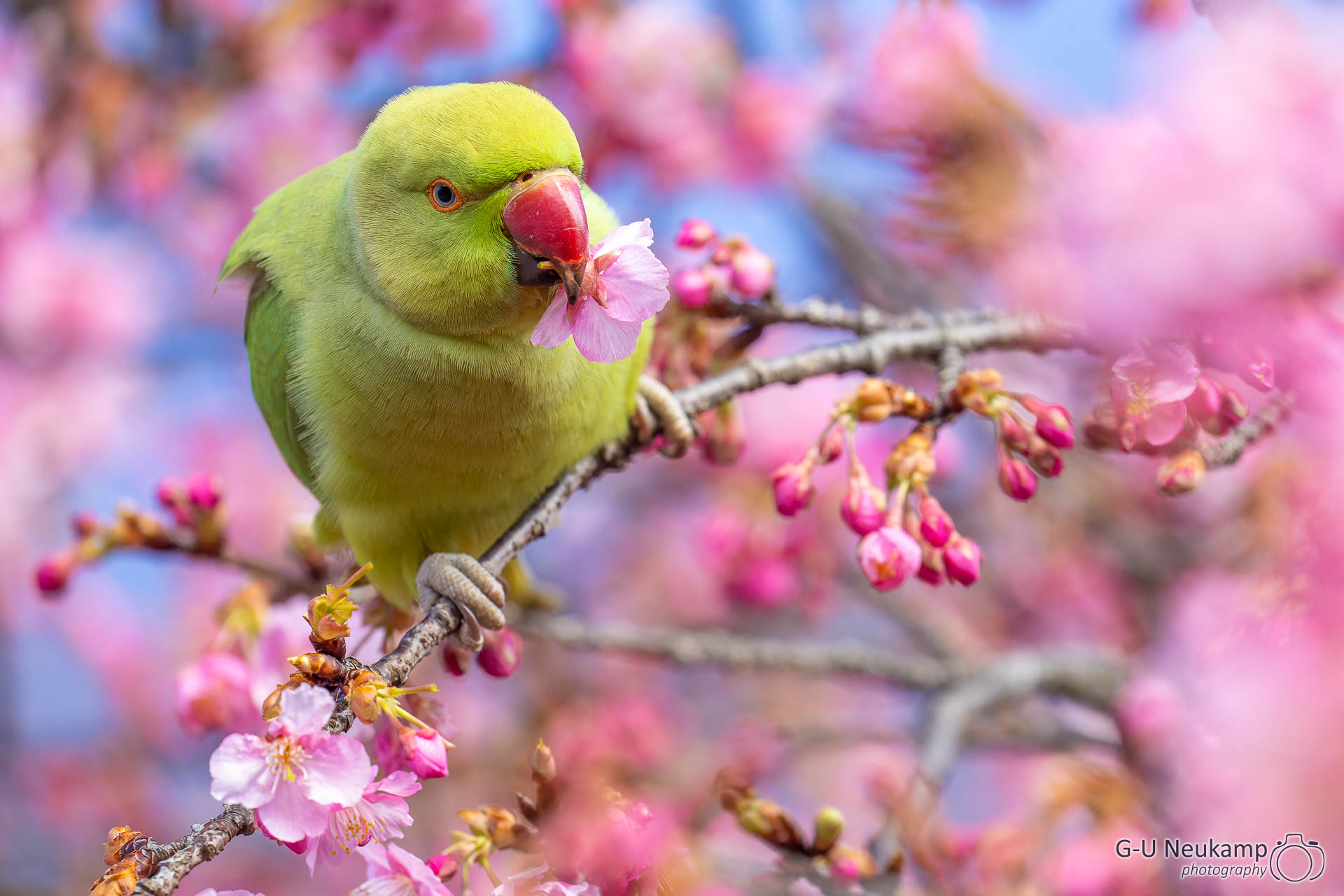
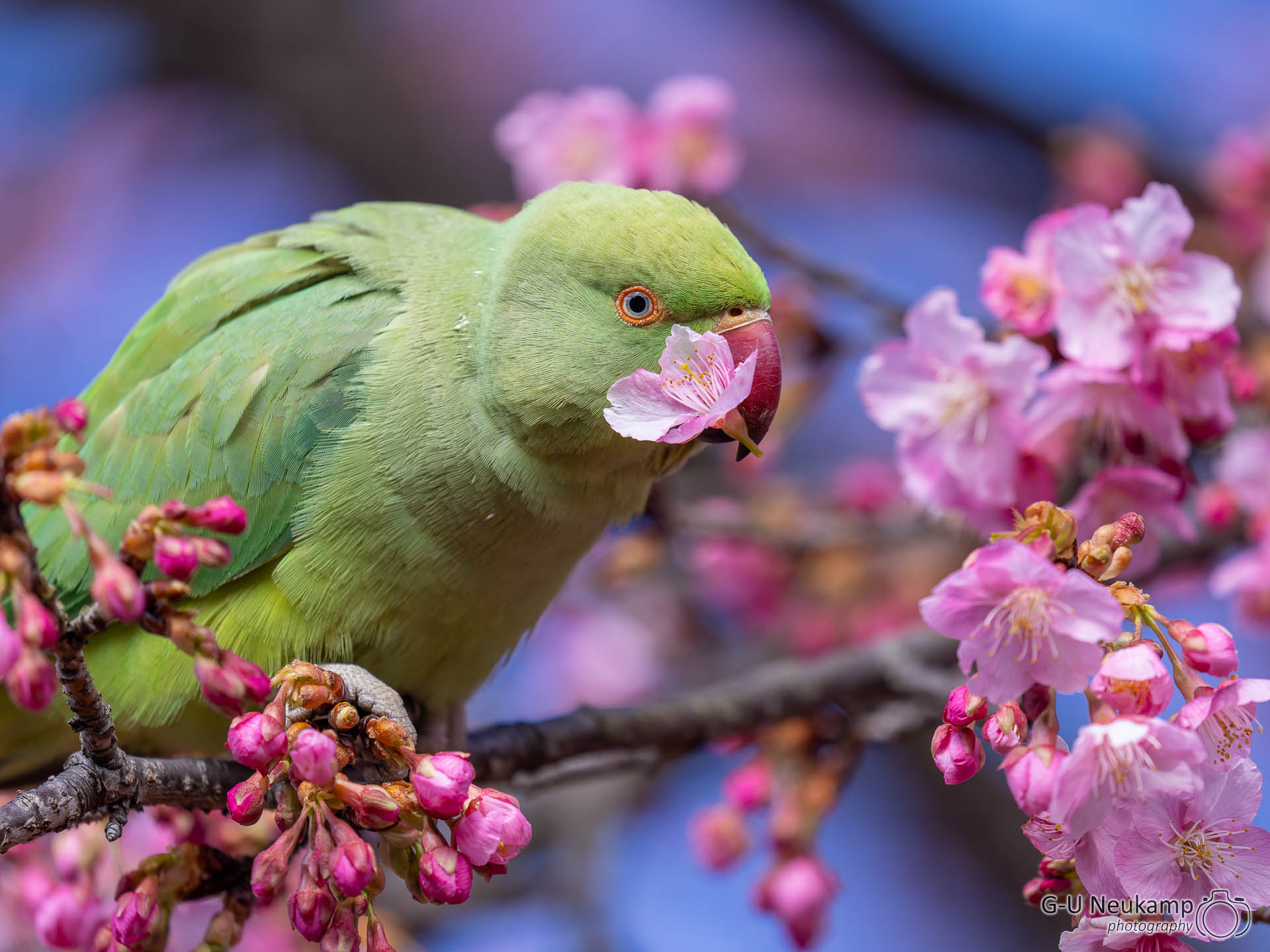
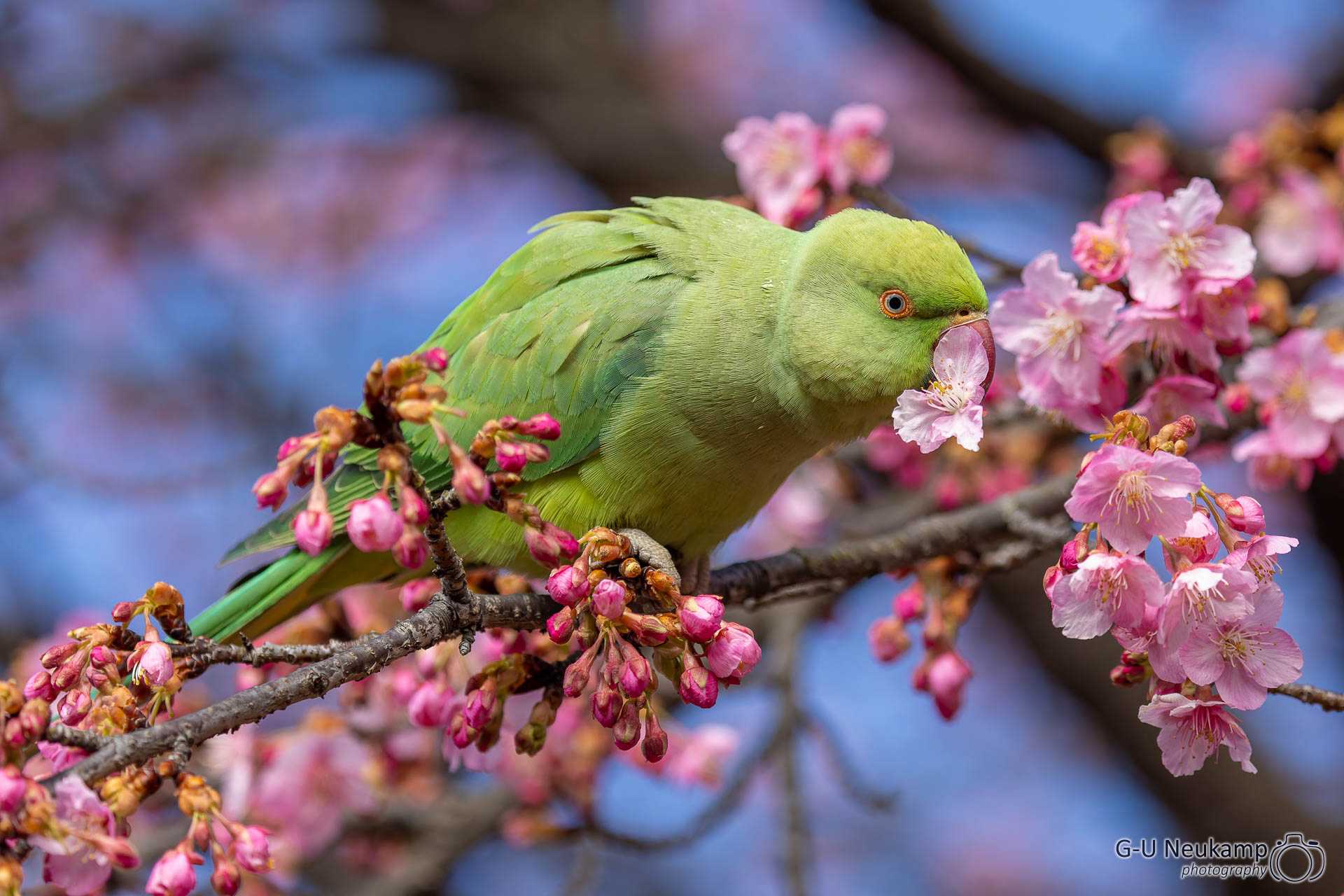
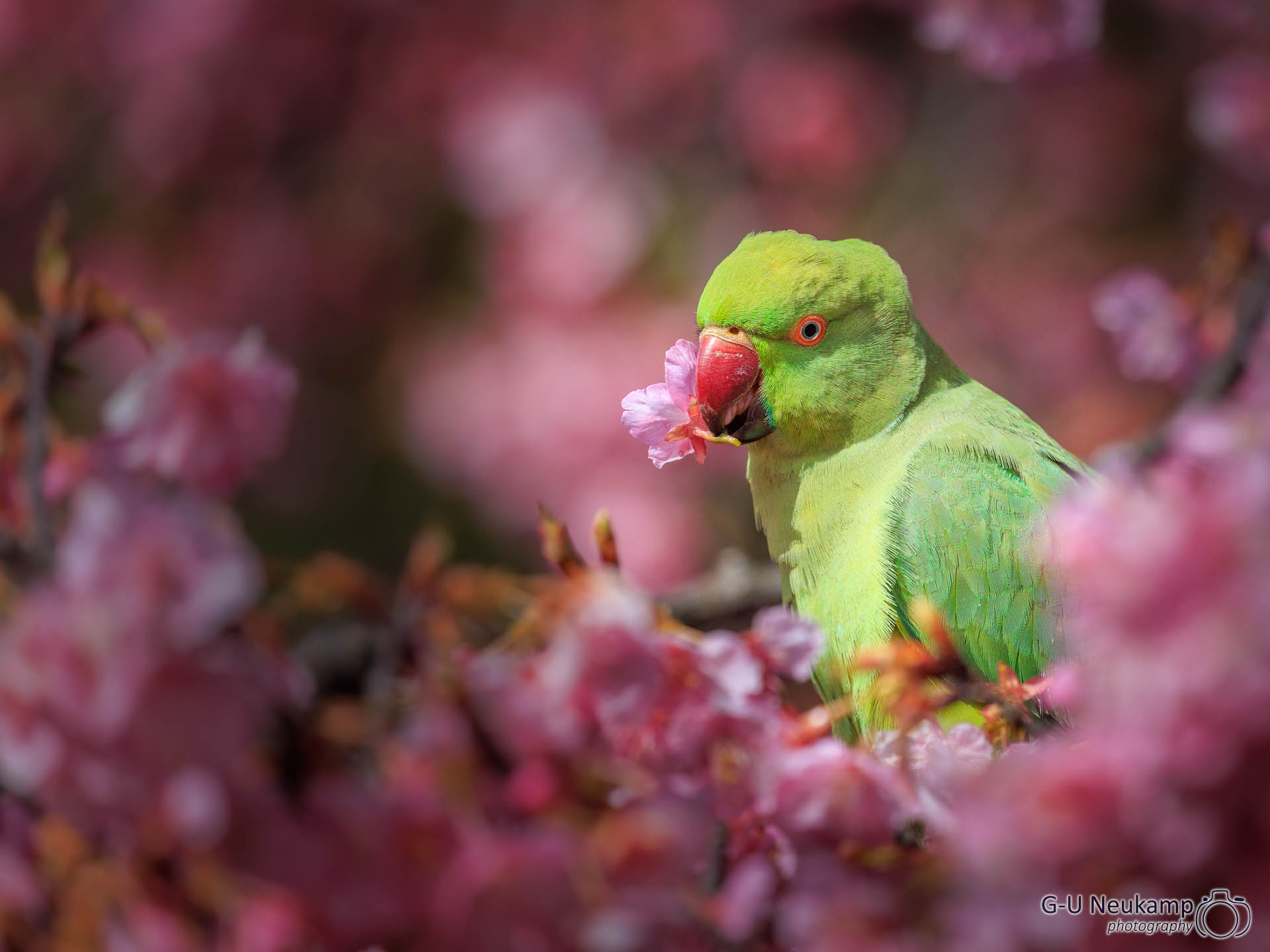
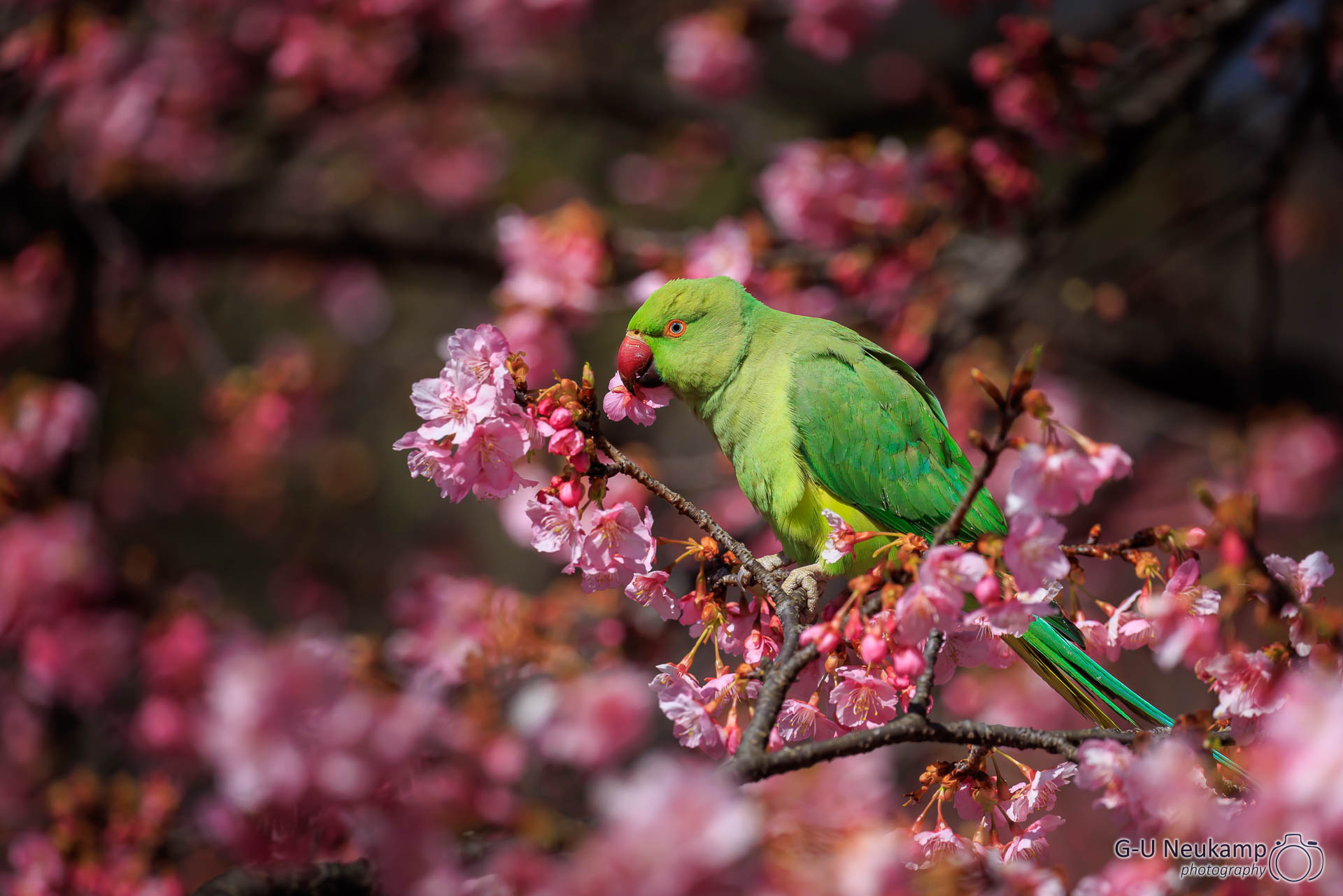
Meiji-jingū Shrine (Japanese 明治神宮 Meijijingū), located in Tokyo’s Shibuya district in Japan near Harajuku Station, is a Shintō shrine dedicated to the souls of Meiji-tennō and his wife Shōken-kōtaigo. The Meiji-tennō, on the other hand, is buried at Fushimi-momoyama in southern Kyōto. The shrine belongs to the Chokusaisha. Chokusaisha (jap. 勅祭社; full title: 勅使参向の神社, chokushi sankō no jinja) are Shintō shrines entitled to a chokushi (勅使), a special emissary of the Tennō at particularly important festivals. There are few of these in Japan. The Meiji-tennō died in 1912, his wife in 1914.
After her death, the shrine to their worship was built in the popular architectural style of nagare-zukuri ( 流造) on land first given to General Katō Kiyomasa (1562-1611) and latterly a secondary residence of Ii Naosuke, who served as chancellor to the Tokugawa. Construction began in 1912 and was completed in 1920. The construction cost had been 20 million yen, most of which came from donations. The shrine was dedicated on November 1st, 1920. This day is considered the anniversary of the shrine, which also hosts the Great Autumn Festival.
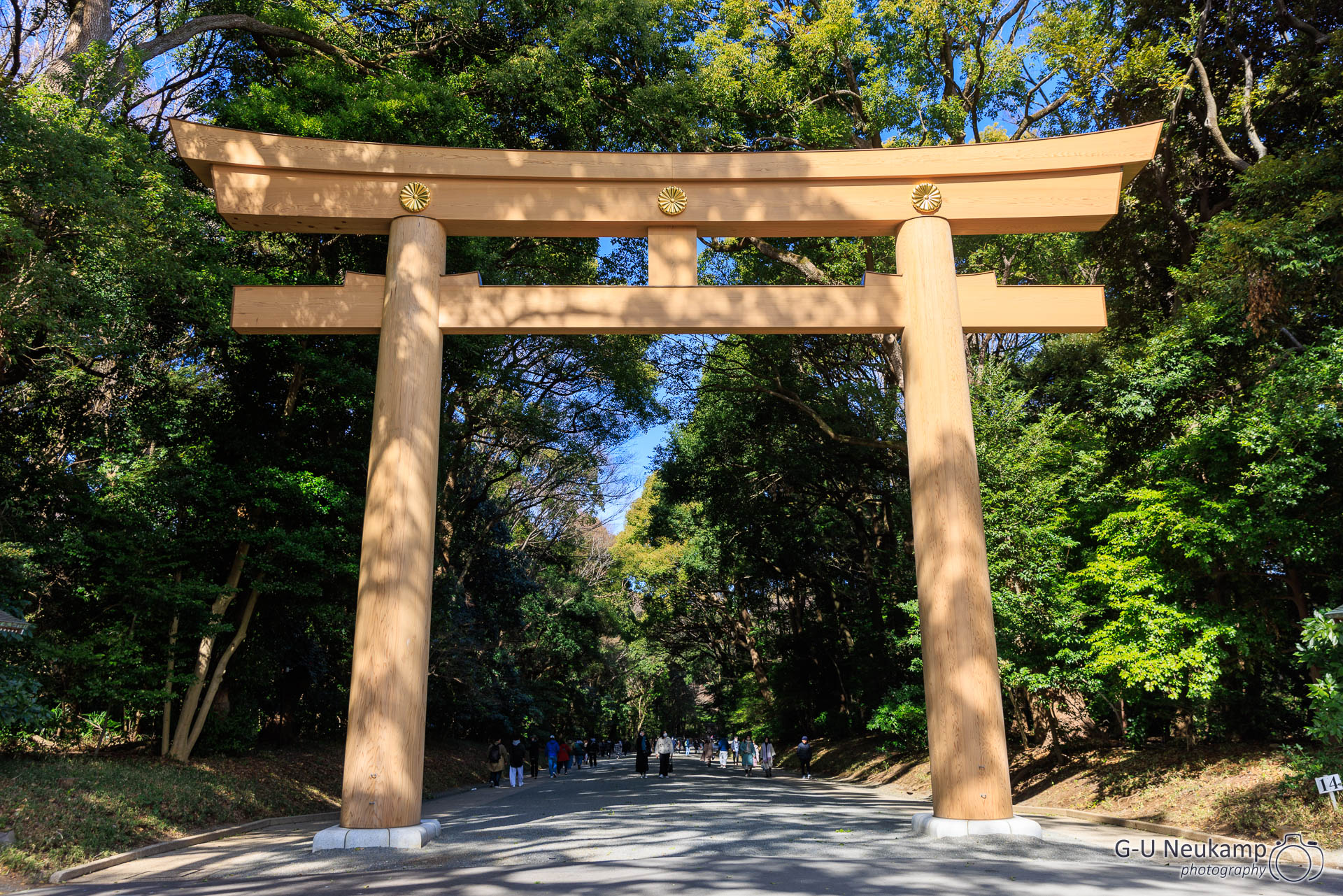
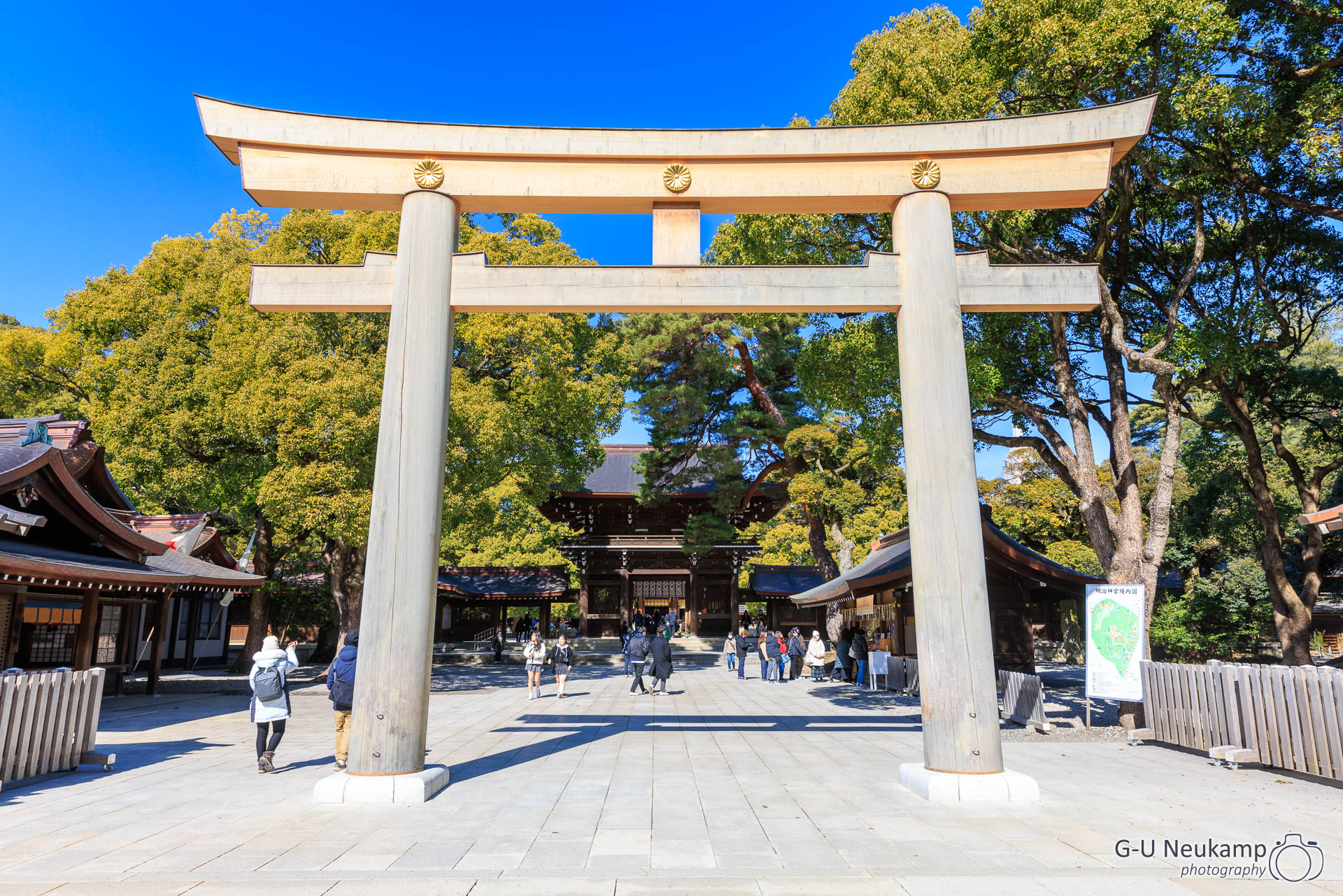
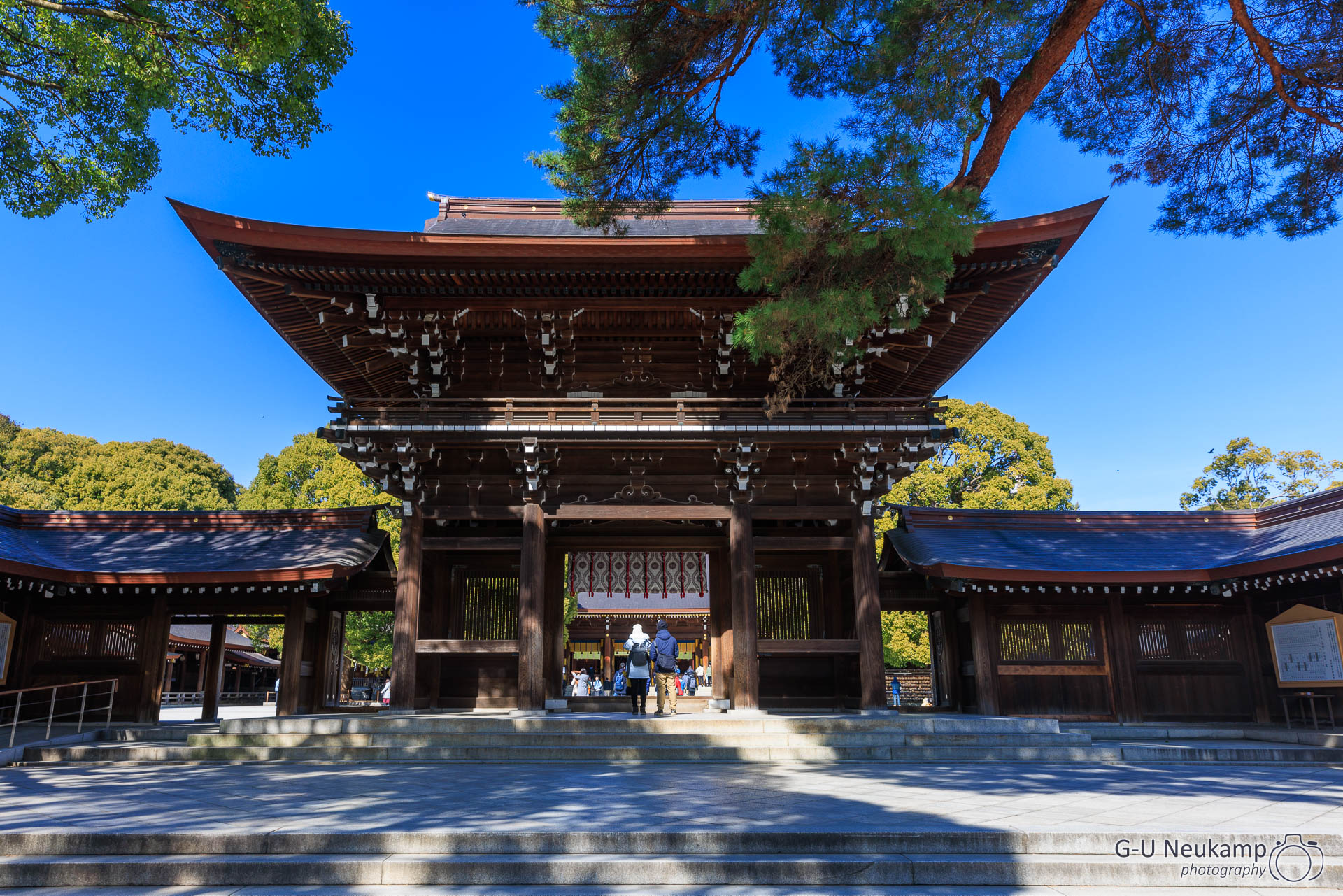
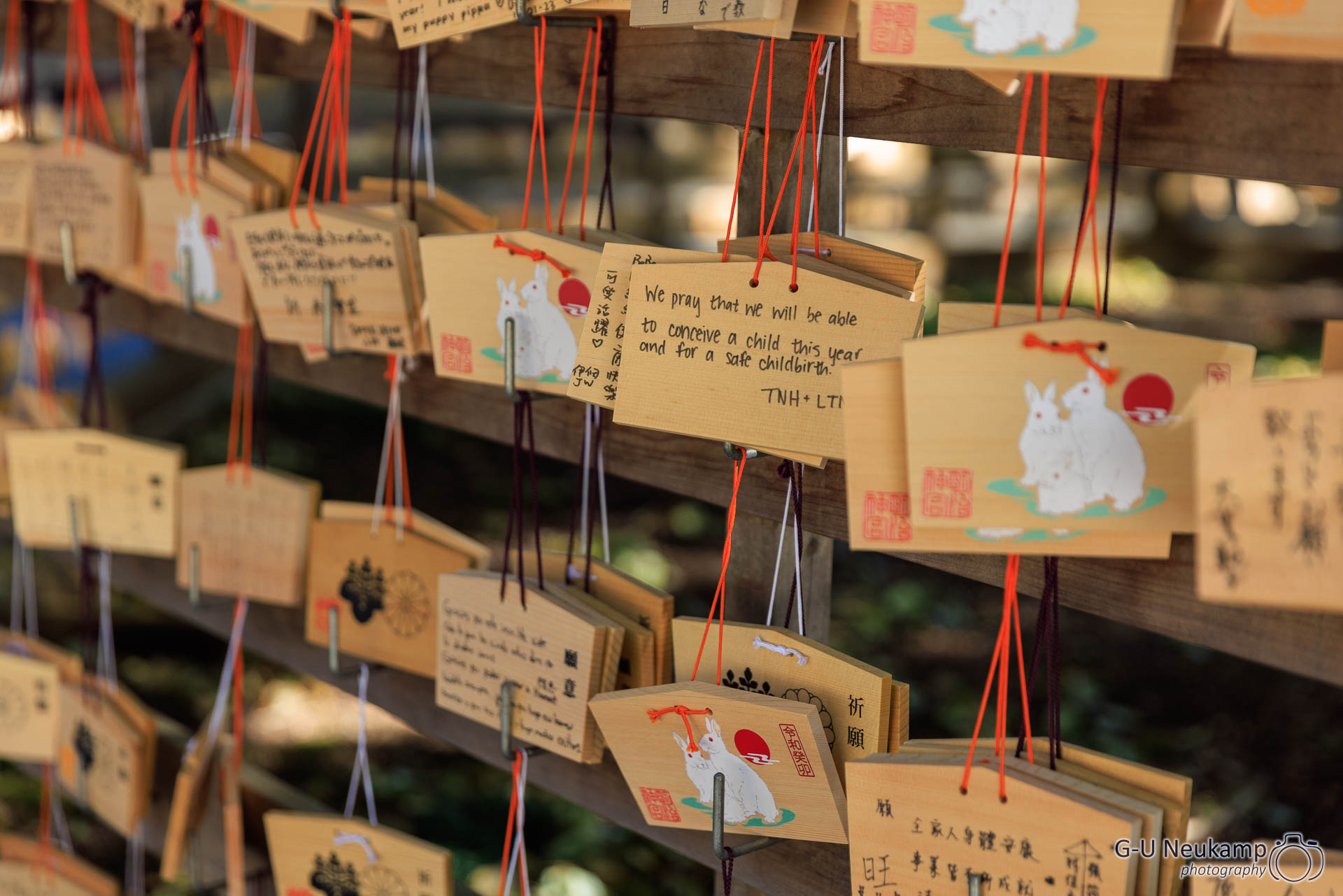
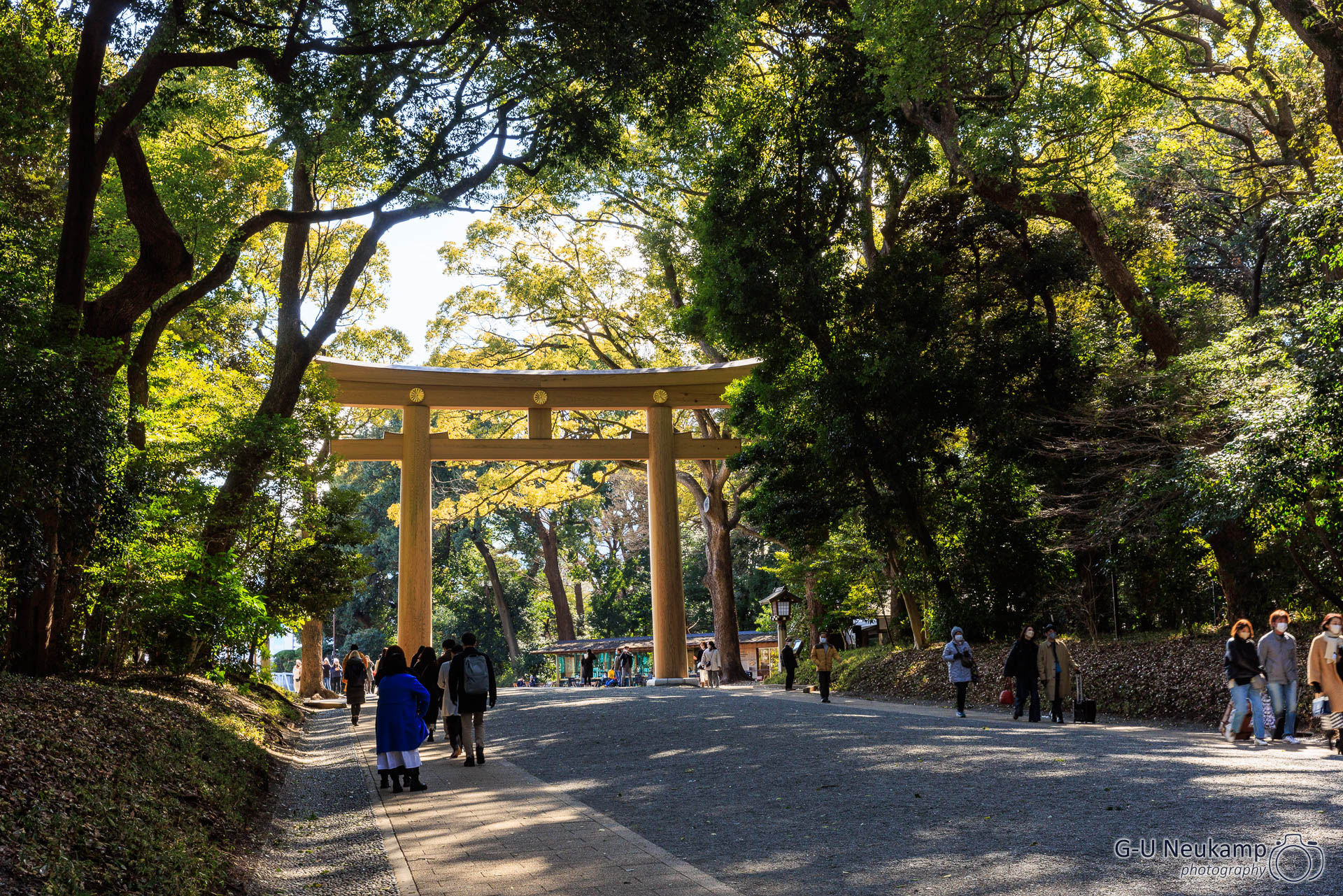
Sake barrels stacked on top of each other are often found at Shintō shrines. Sake (Japanese 酒 [sakɛ]) is an alcoholic beverage brewed from polished rice. The clear or whitish-cloudy beverage contains about 15-20 percent alcohol by volume. Sake plays an important role in the religious beliefs of the Japanese. The country’s traditional beverage was once even called “divine wine” according to the written characters. Since rice wine is needed to perform rituals and festivals, sake breweries regularly donate to shrines.
However, the stacked barrels at the shrines are empty decorative vessels called kazaridaru (飾り樽, Engl. “decorative barrel”). Their donation serves a symbolic purpose. Homage is paid to the gods and a request is made for continued good yields.
The last Meiji-tennō oroientated himself increasingly western and appreciated western food and also wines. For this reason, the Meiji Shrine also contains a collection of wine barrels (presumably also empty) donated from the French Bourgogne region.
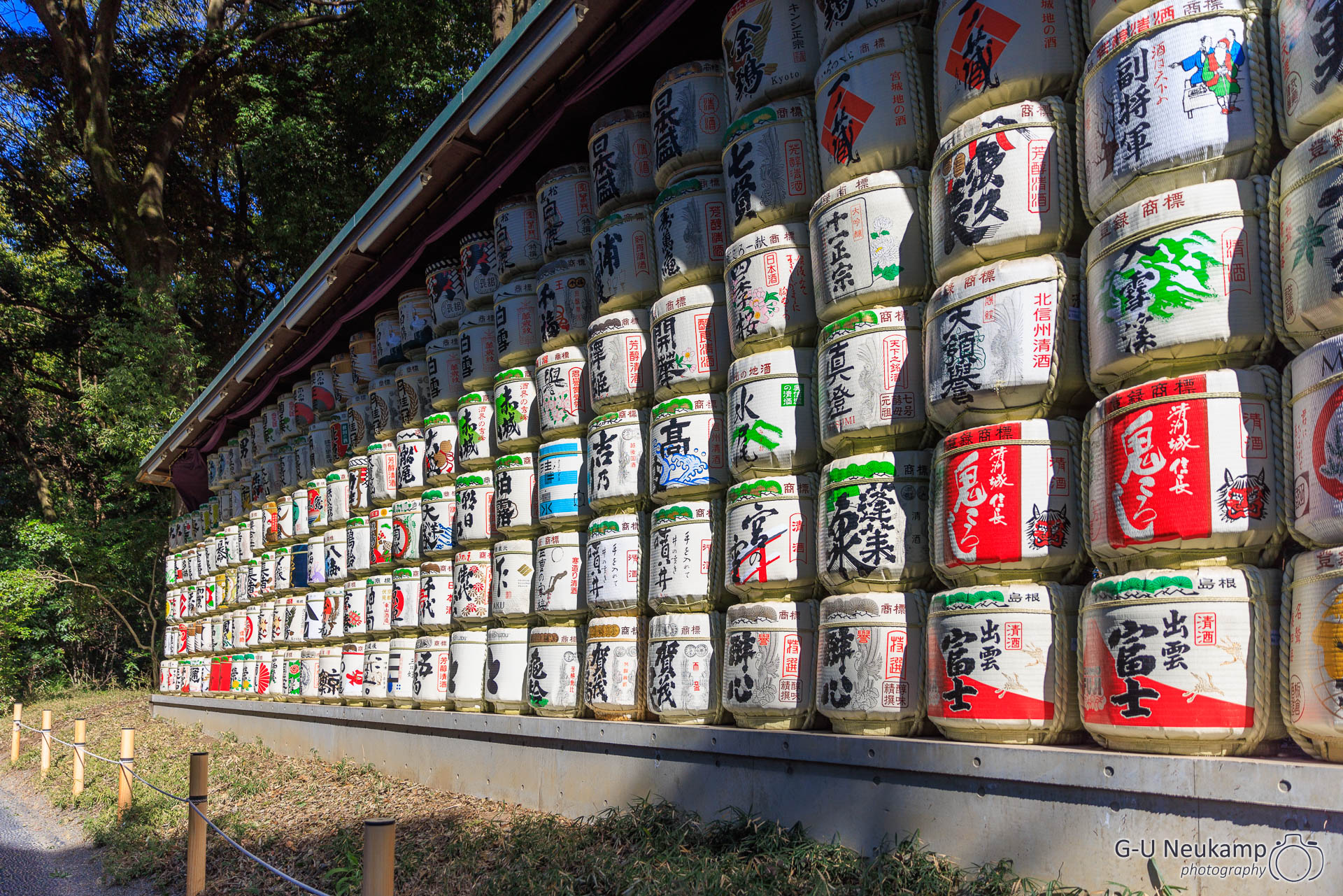
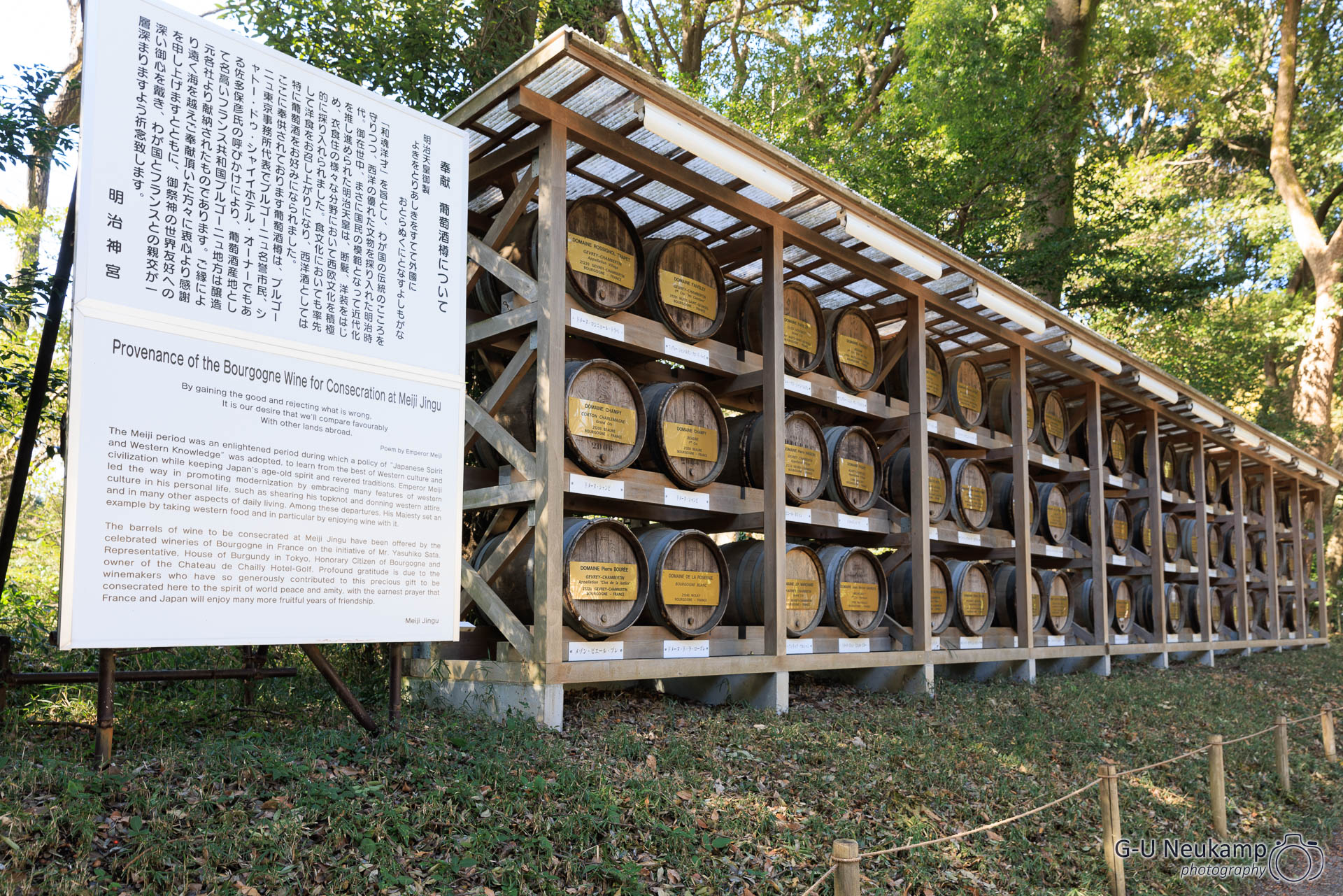
On the way back from Meiji Shrine, we made another stop in Shibuya in now nice weather and took some more photos of the busy crossing.
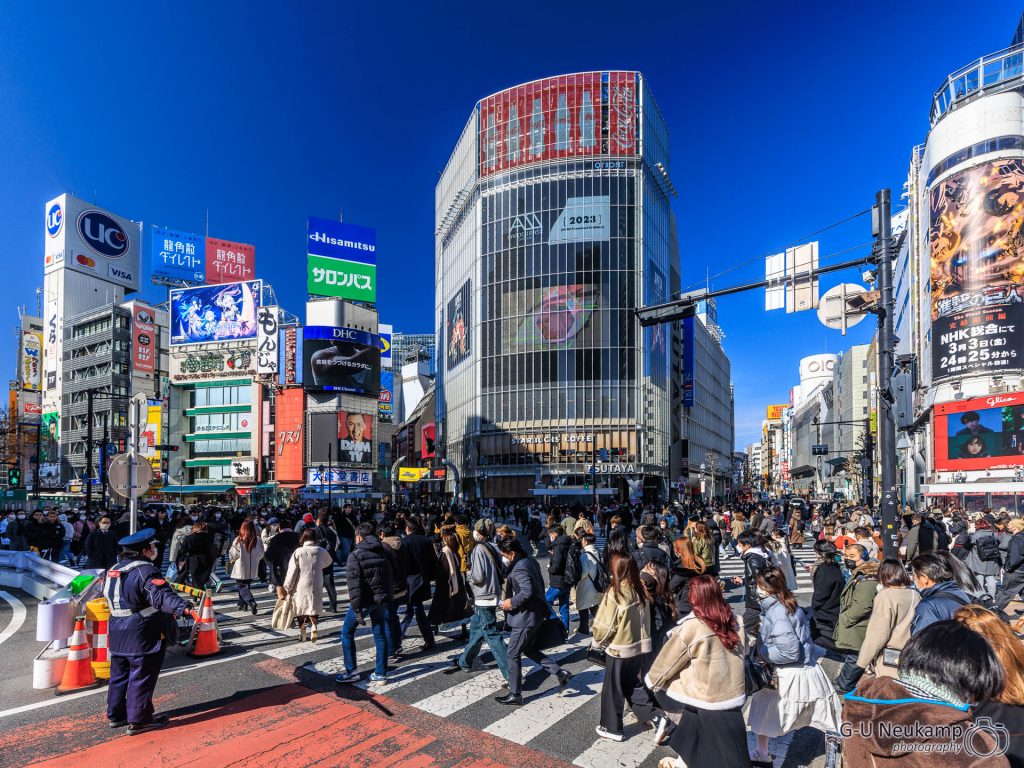
The familiar intersection was now much more crowded than it had been on our first visit in the rain.
After the stop in Shibuya, we went to the Tokyo Skytree. The Tokyo Skytree (Japanese 東京スカイツリー, Tōkyō Sukaitsurī) is a 634 meter high television and radio broadcasting tower and opened on May the 22nd, 2012. It is currently the tallest television tower and the third tallest structure on earth after the Burj Khalifa in Dubai and the PNB 118 in Kuala Lumpur.
By the way, the altitude of 634 meters was supposedly deliberately chosen to be easy to remember. The numbers 6 (mu from mu[ttsu]), 3 (sa from san) and 4 (shi) add up to “Musashi”, an ancient name for the region where Tokyo is located. The tower offers two very popular viewing platforms at a height of 350m and 450m.
Luise had booked tickets for us for 4:00 p.m. We wanted to watch the sunset from the upper viewing platform (from 450m height) during the wonderful weather. It was also very spectacular again, but unfortunately Mount Fuji hid himself behind clouds, but we will have plenty of opportunity to see him later (hopefully). The Skytree was not very far from our hotel, so we walked there by foot. Some pictures from the way:
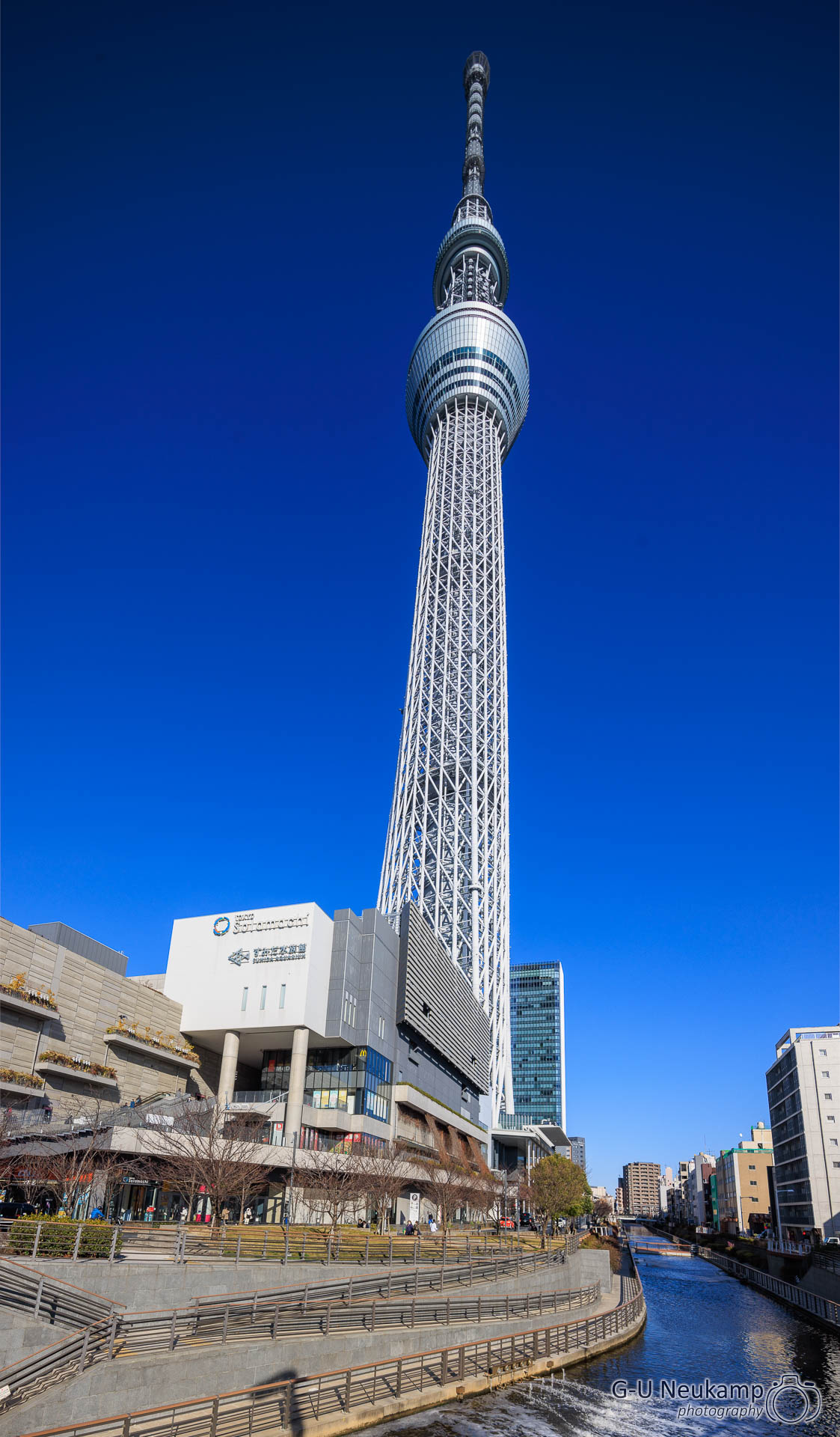
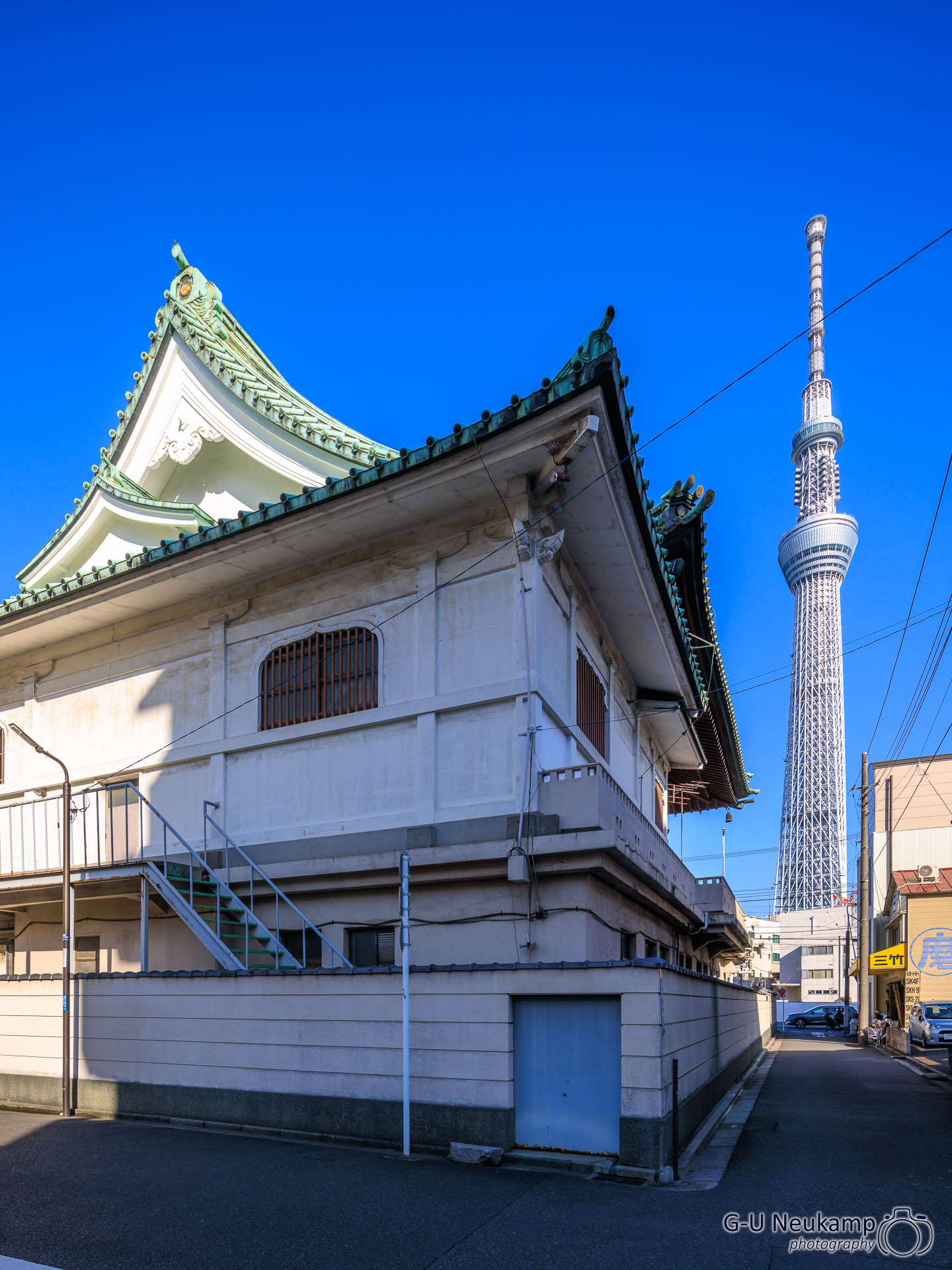
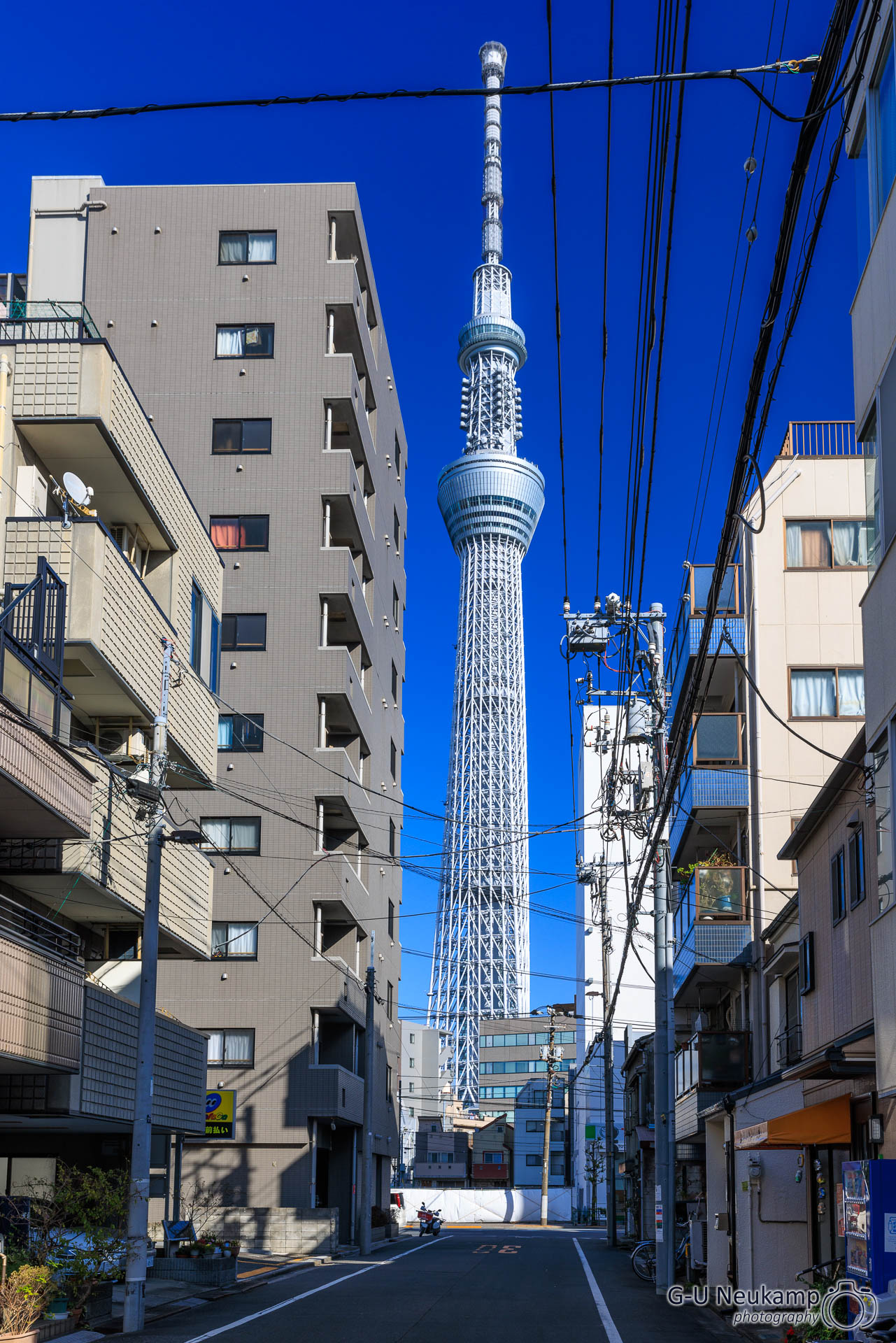
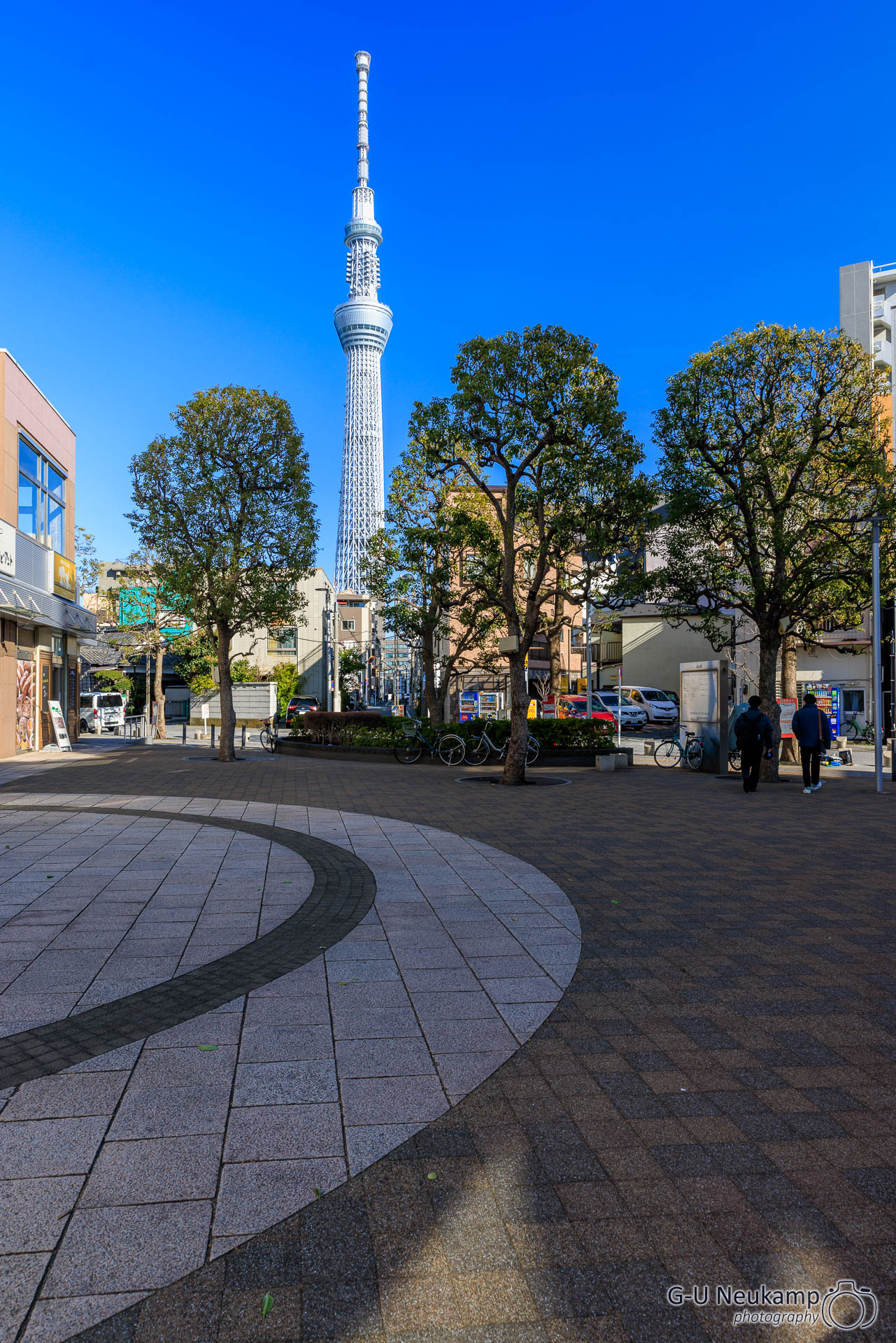
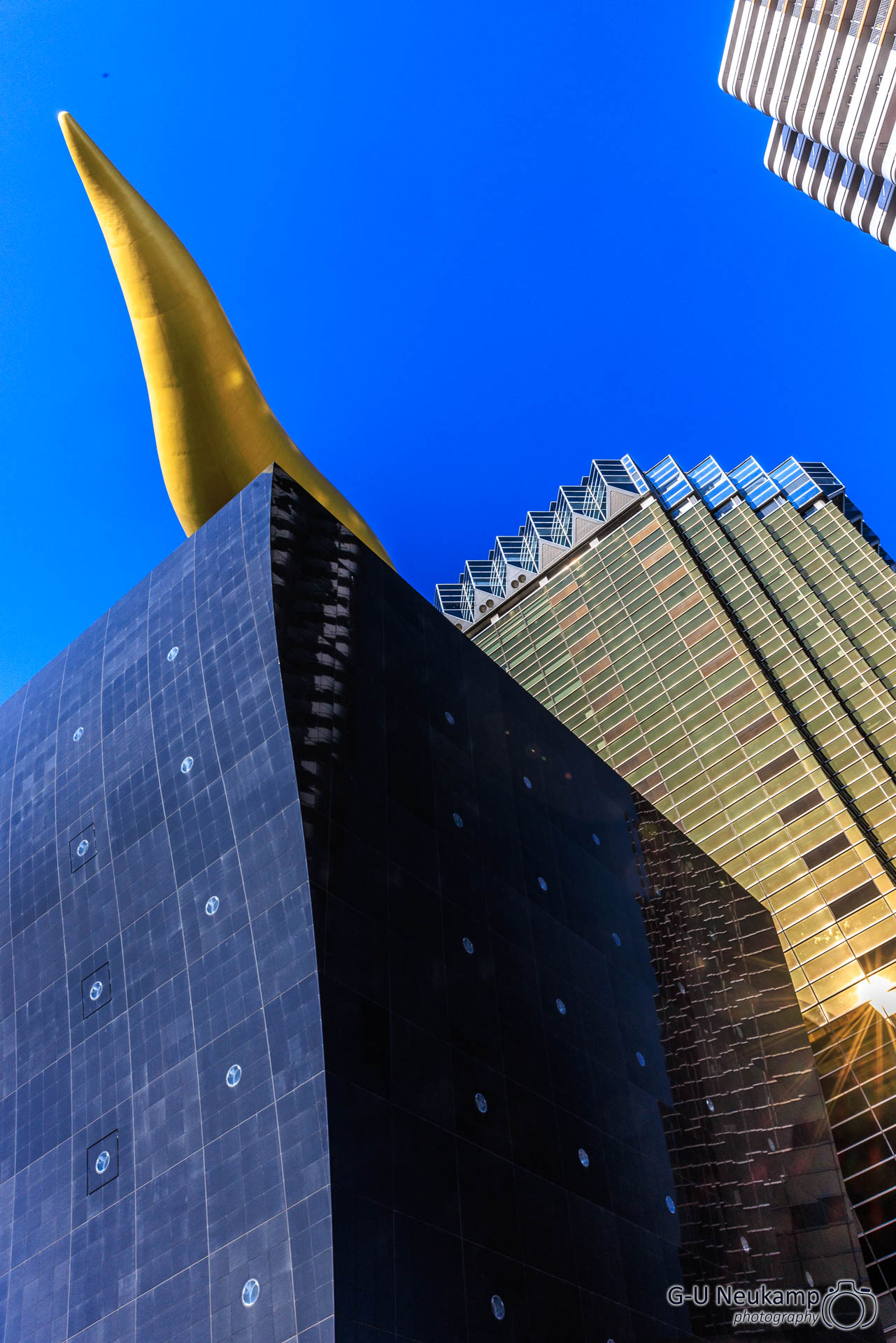
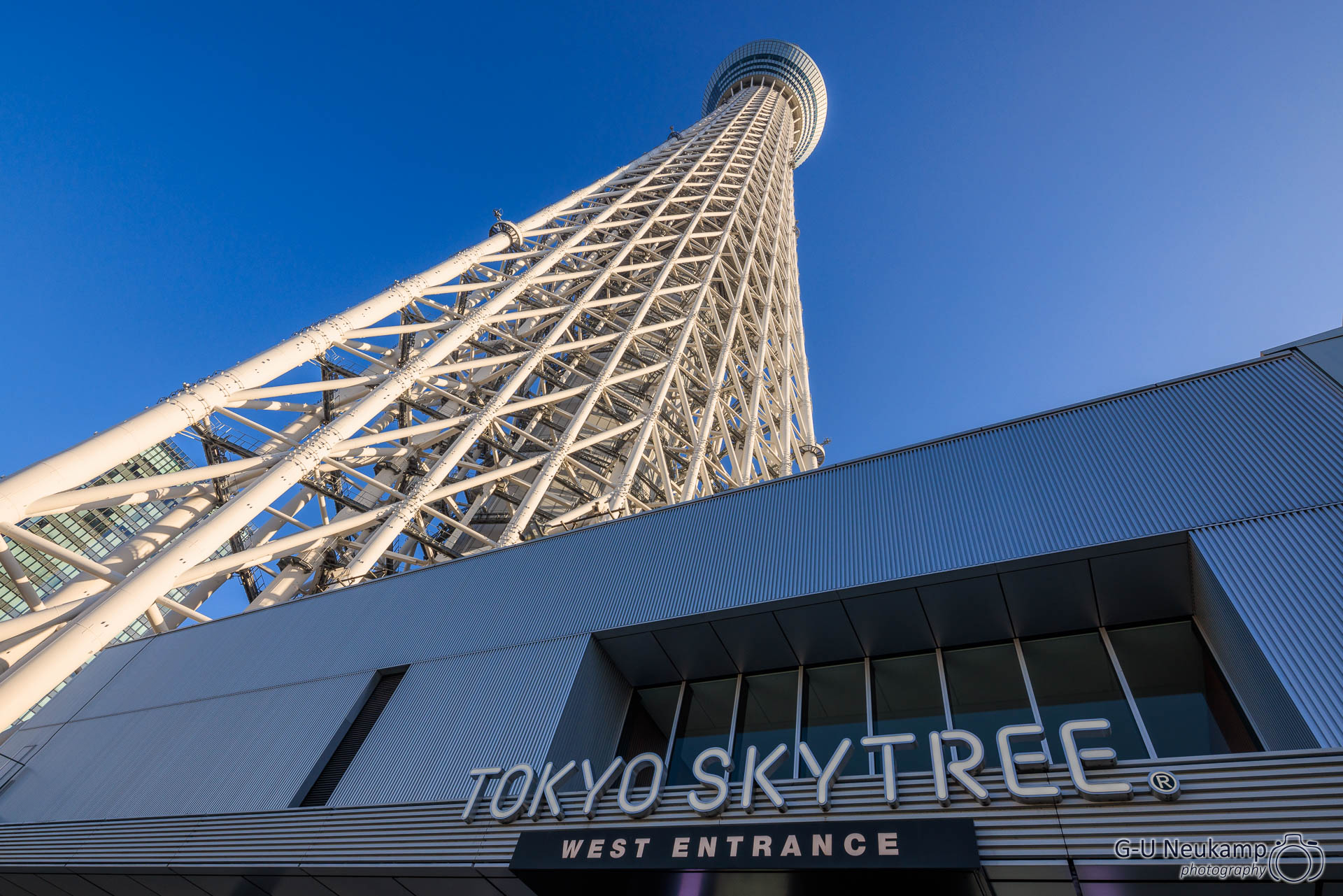
Since we arrived at the Skytree a little too early, we first went to a café at the foot of the Skytree and fortified ourselves for the long photo session with waffles and ice cream.
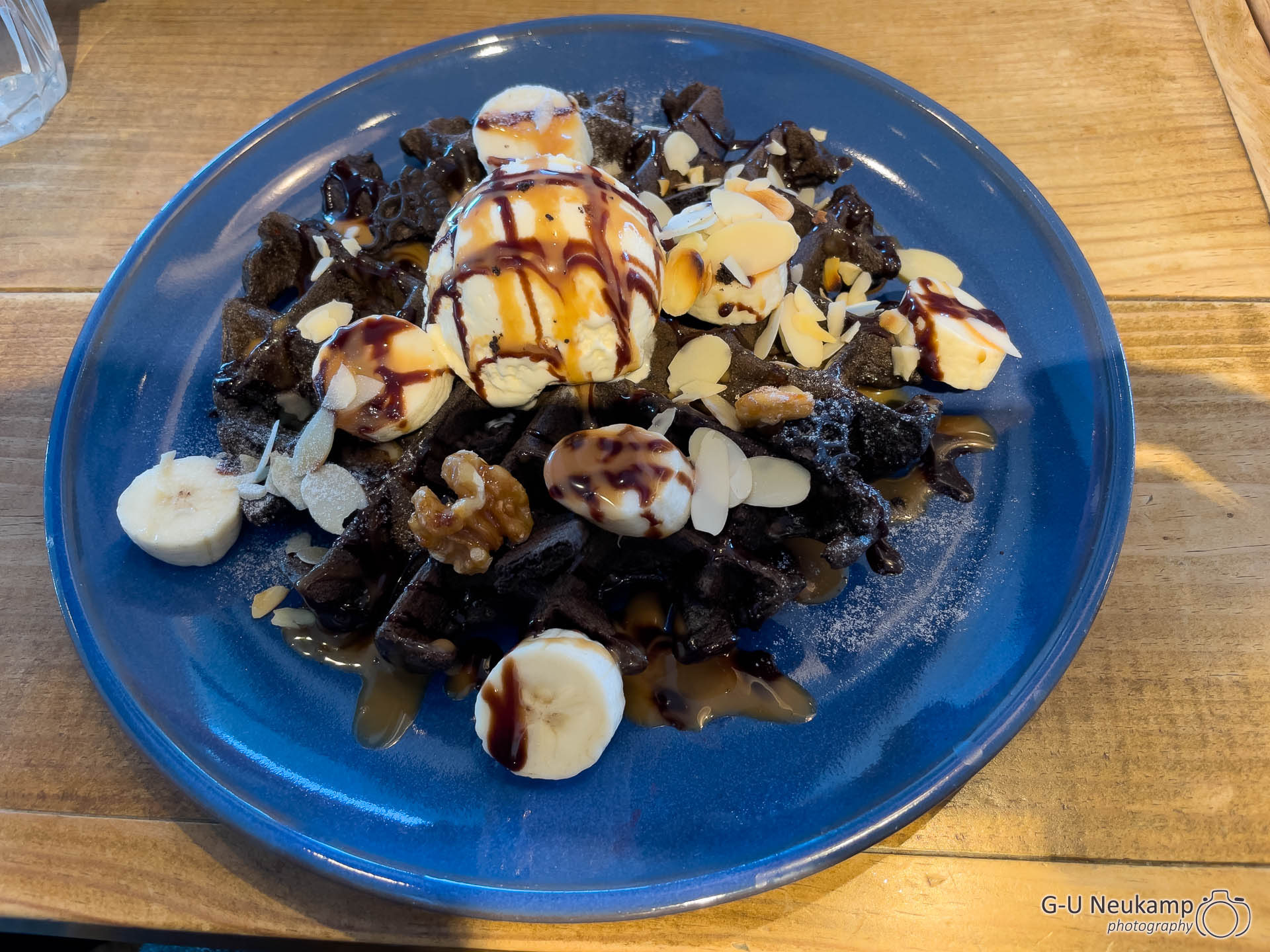
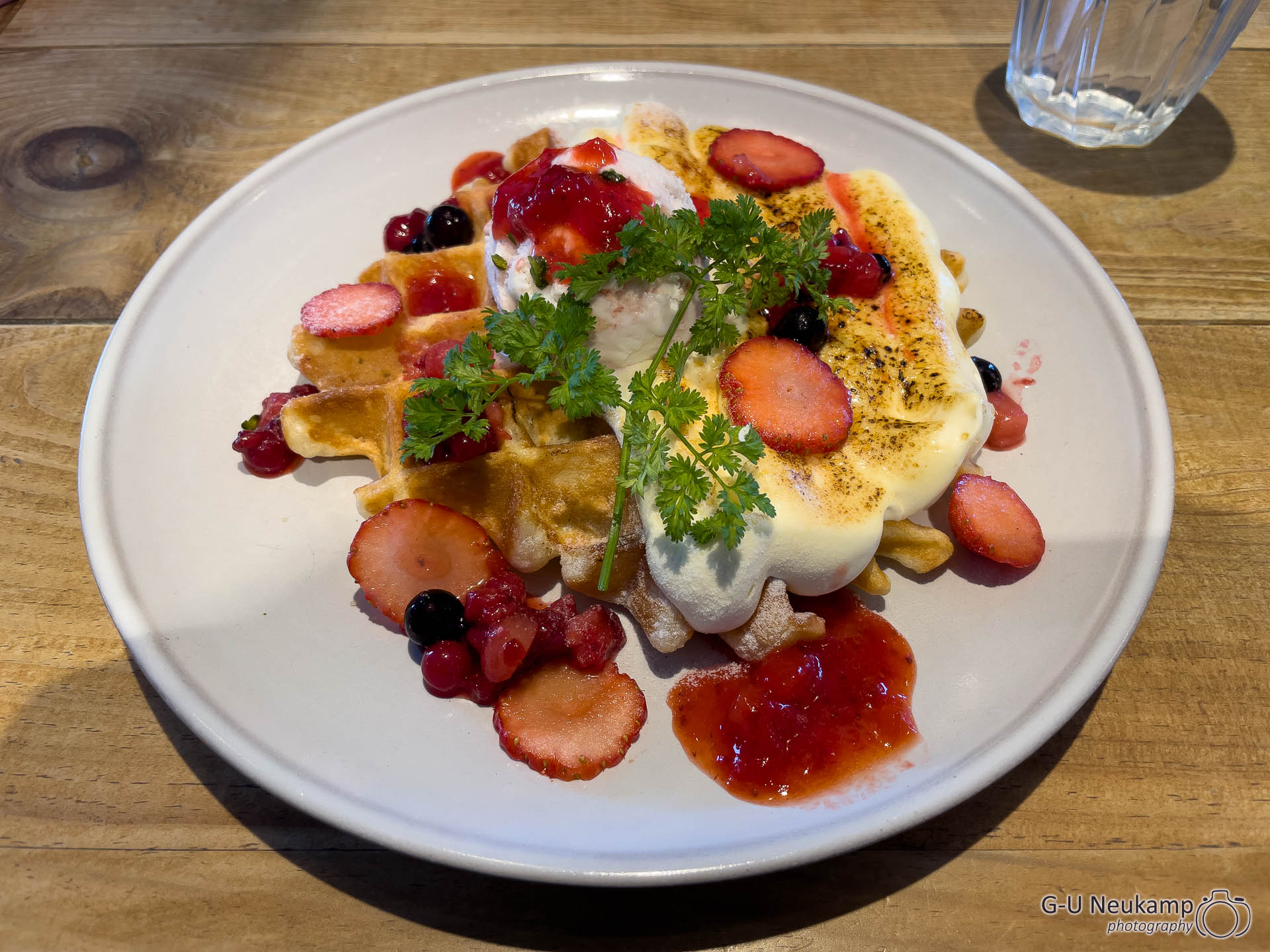

At exactly 4:00 p.m. we were back in the tower and after a short delay we could take the elevator up to the lower 350m high “Tembo Deck”. There we went directly to the end of the long queue to the second elevator, which after about 1/2 hour took us to the top viewing platform “Tembo Galleria”.

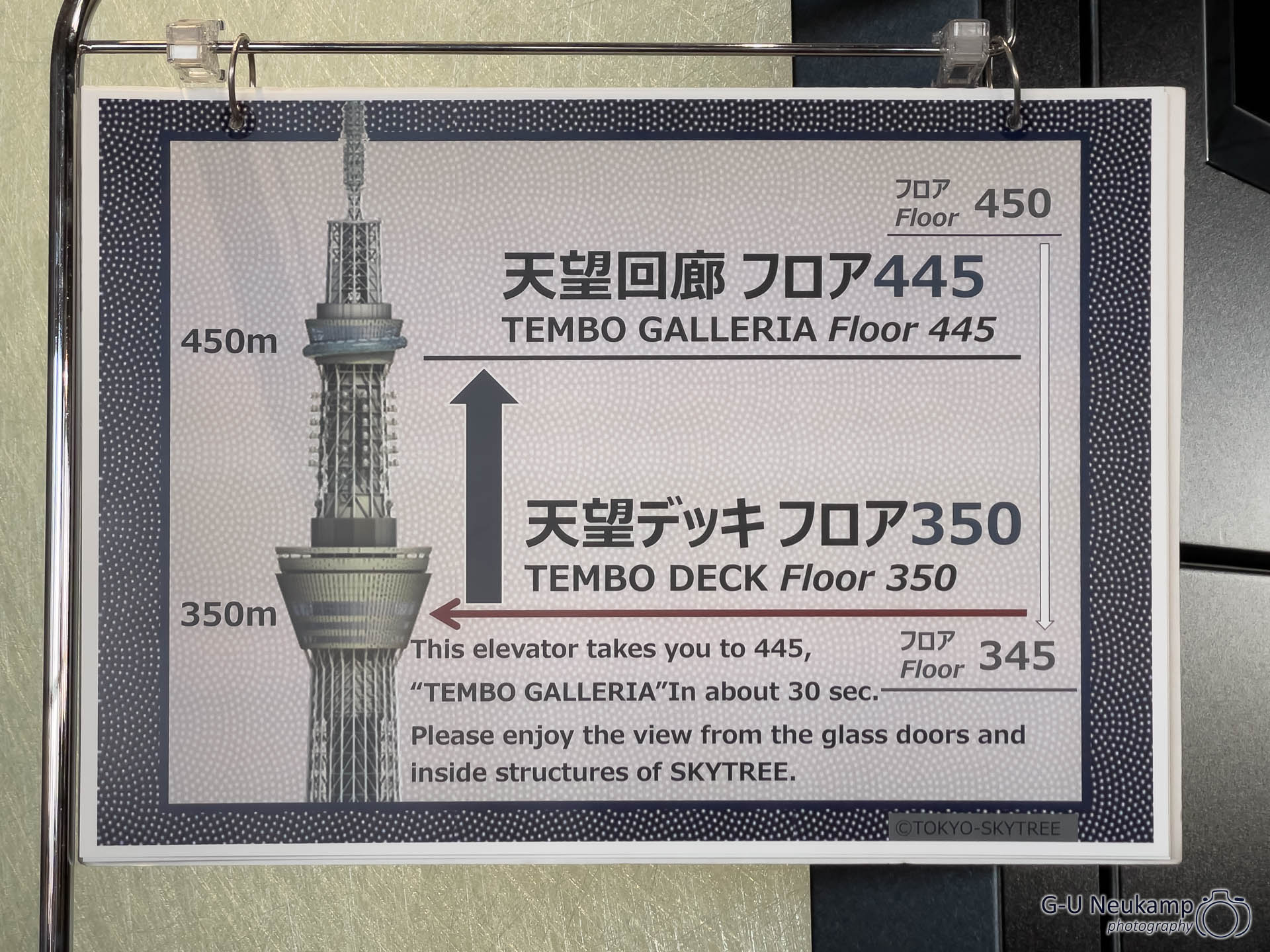
From up there, there was a magnificent view of the gigantic metropolitan region of Tokyo, which stretched to the horizon. The long shadow cast by the SkyTree was also very impressive.
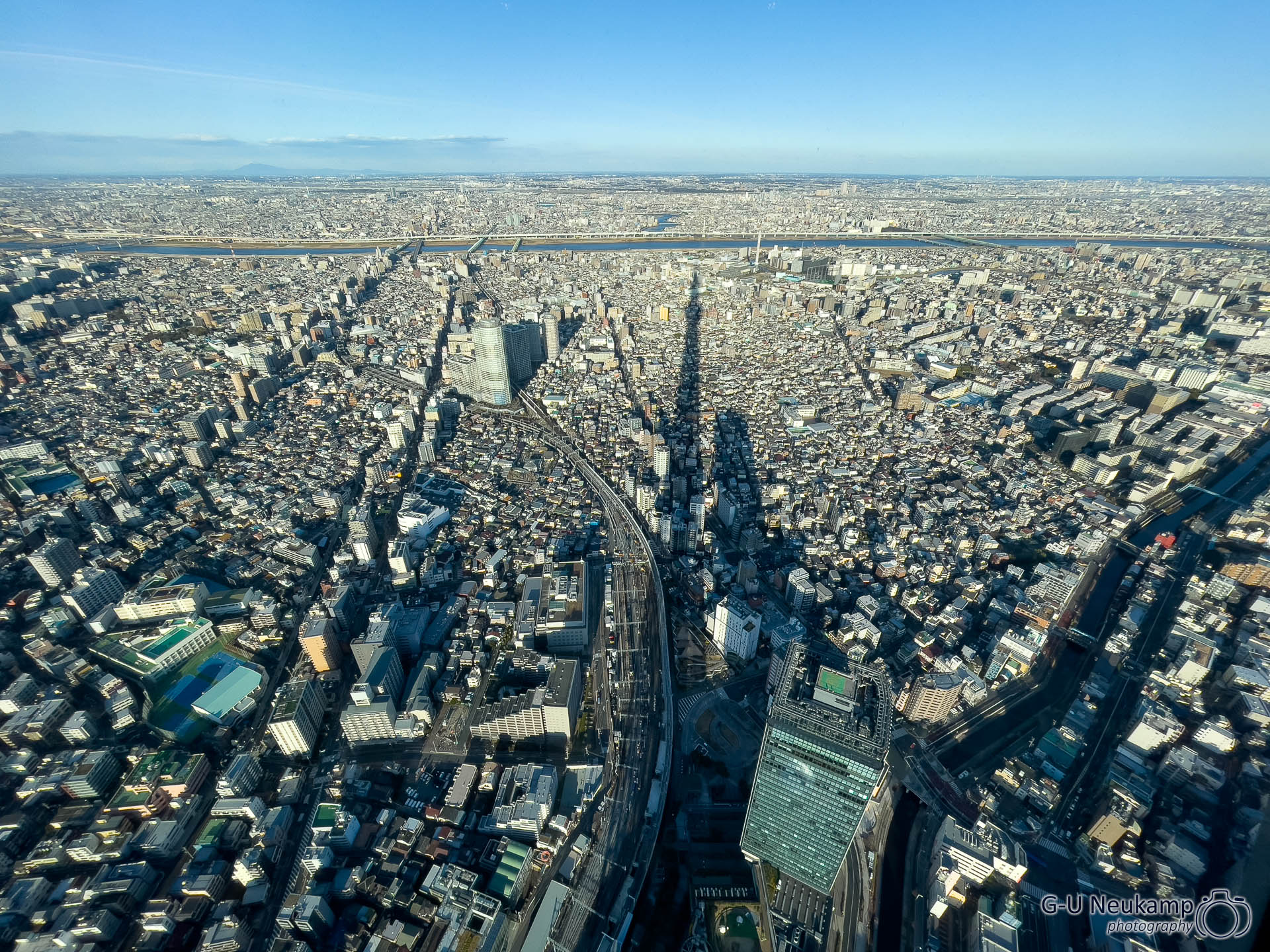
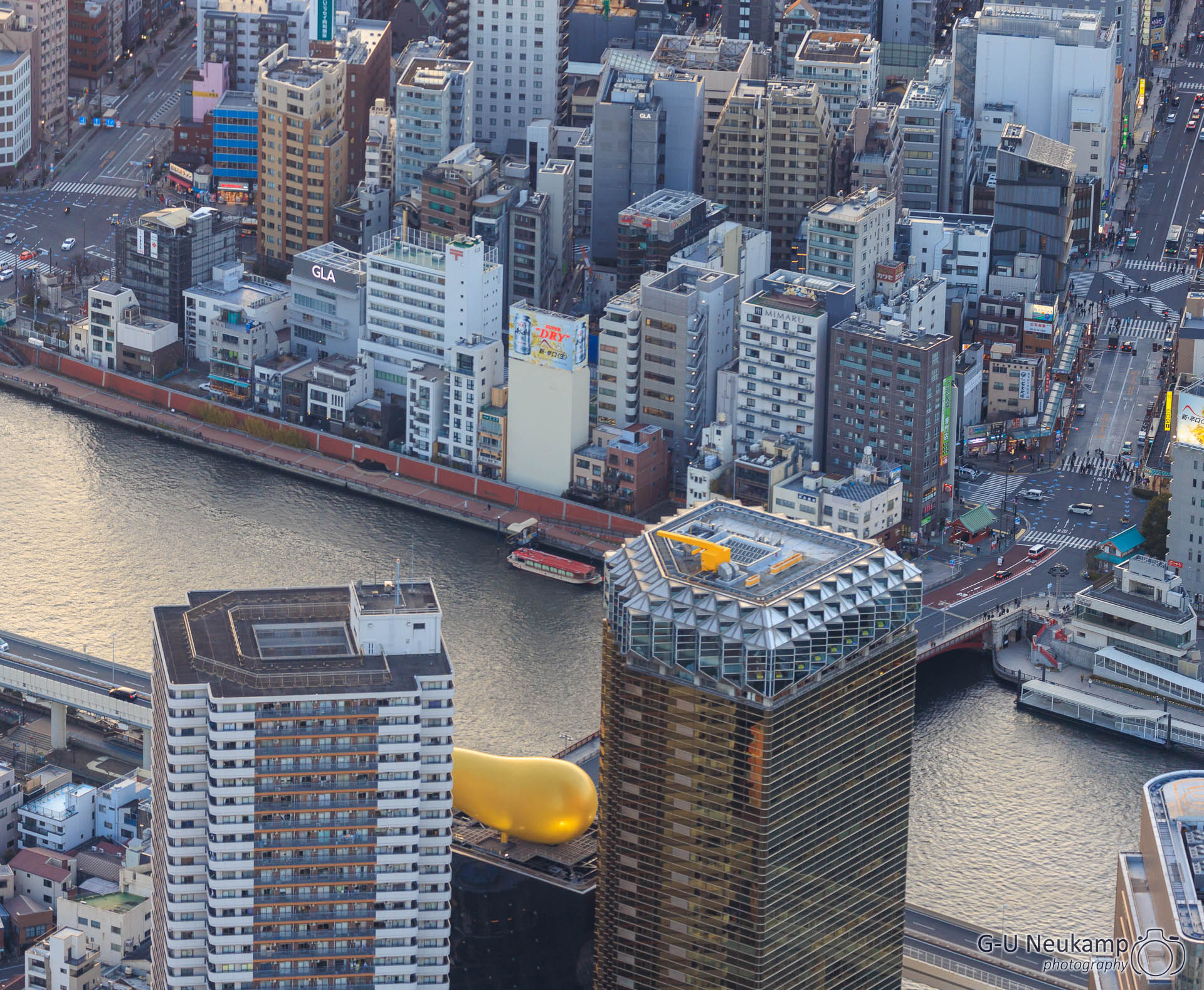
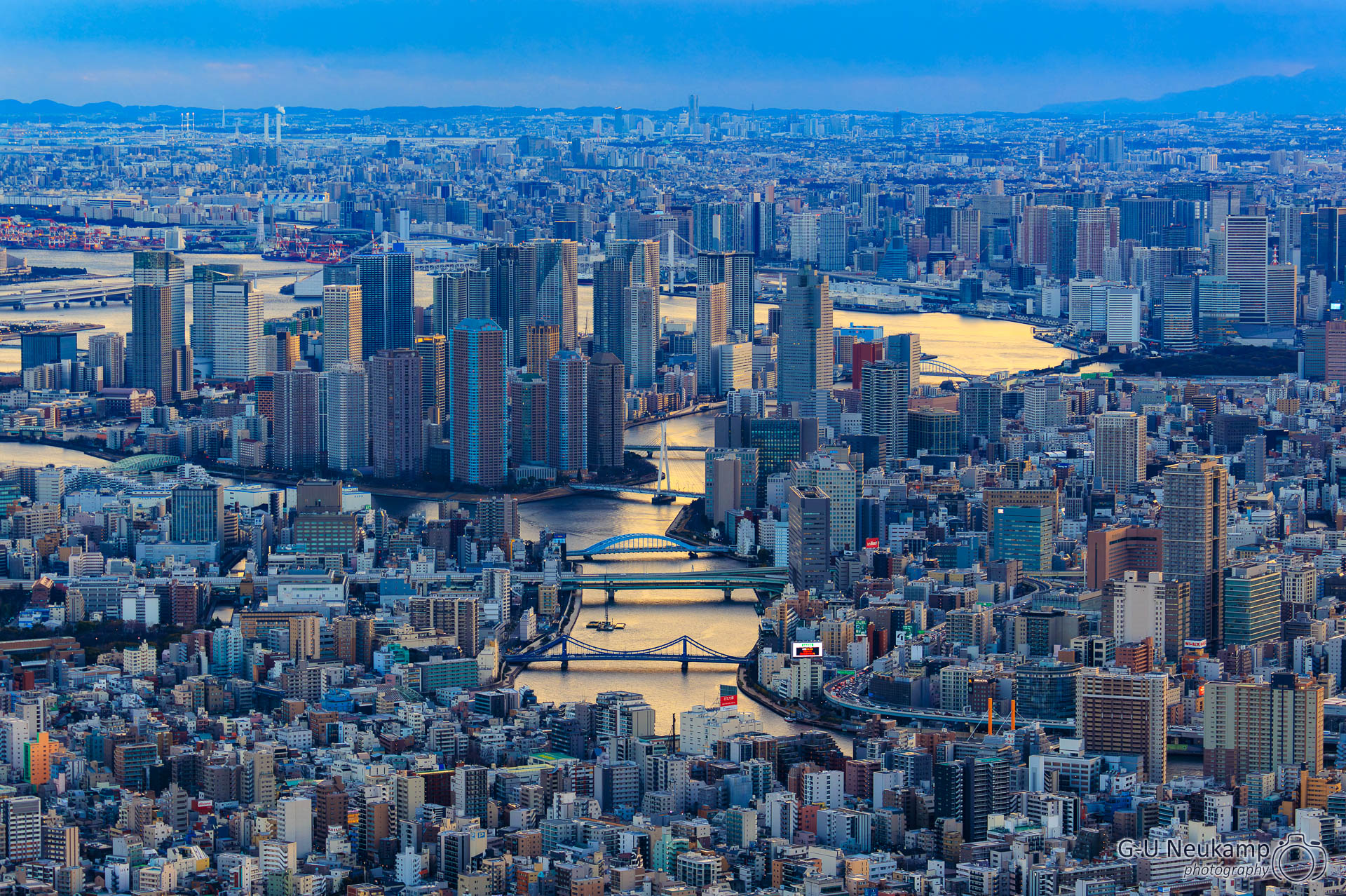
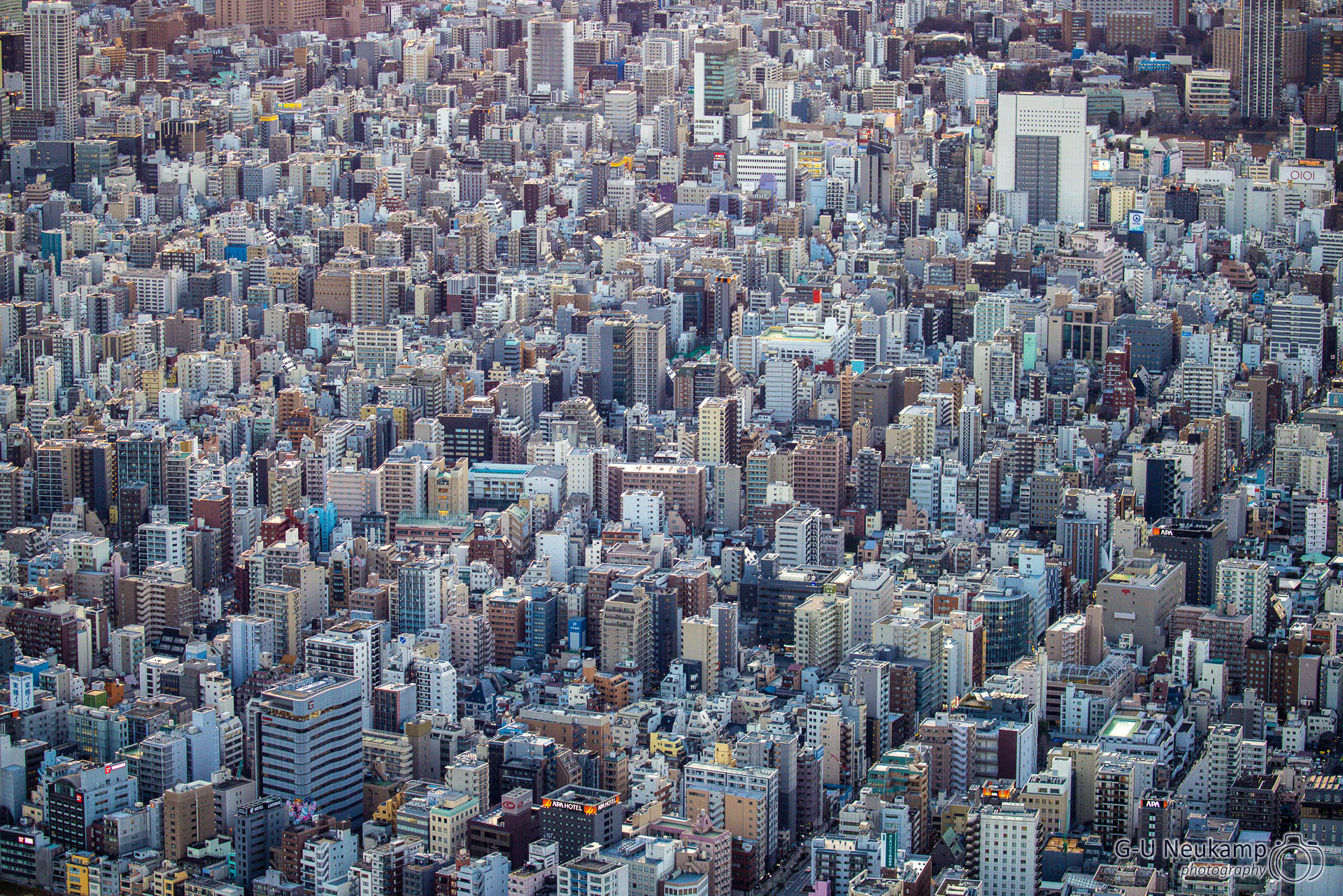
Here are some more pictures from 450m height. On the top left you can see our MIMARU Aparthotel behind the building of the ASAHI brewery.
We stayed in the upper Tembo Galleria until shortly after sunset and enjoyed the view across the impressive metropolitan region stretching to the horizon, where the lights came on little by little. Here are some more pictures from above:
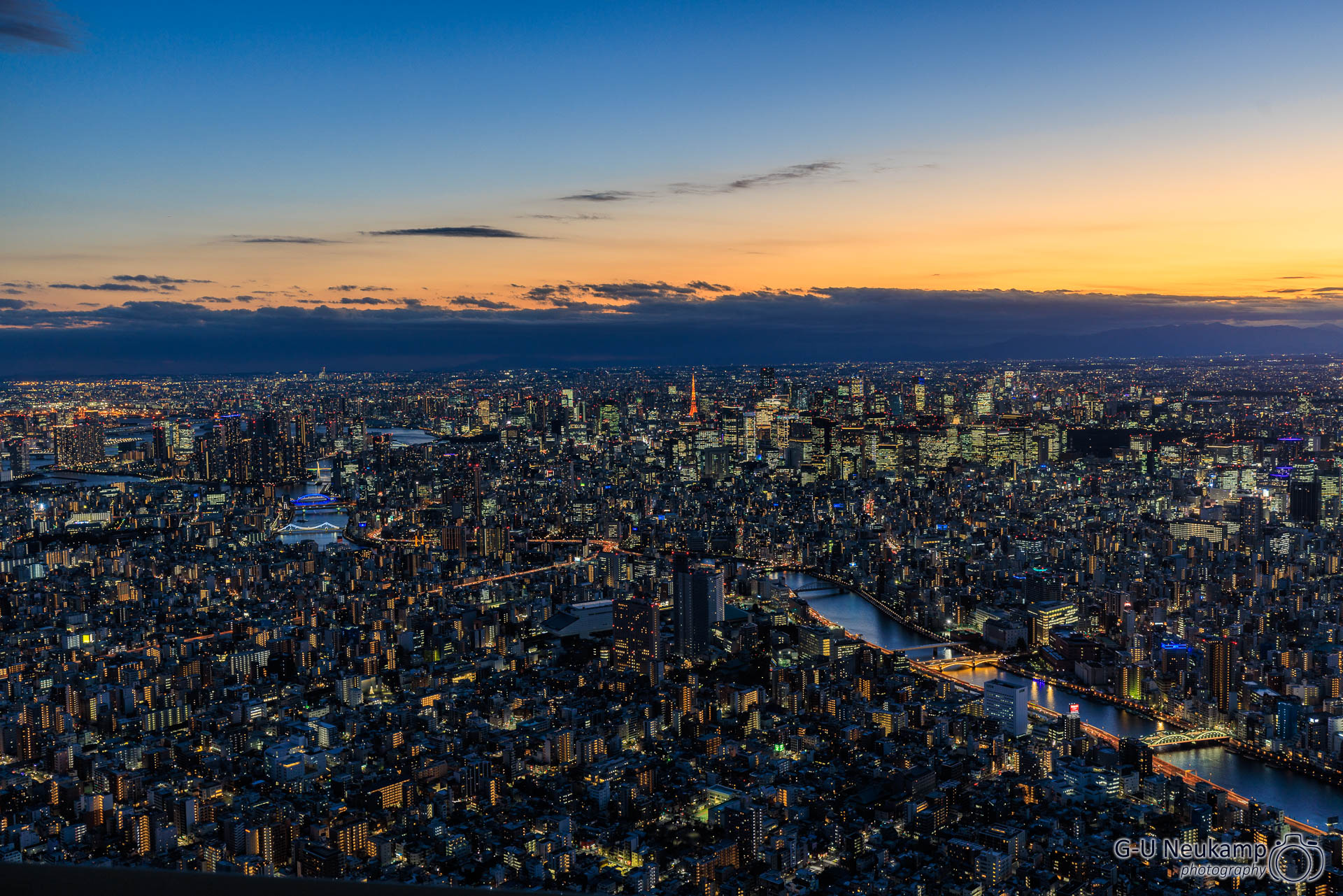
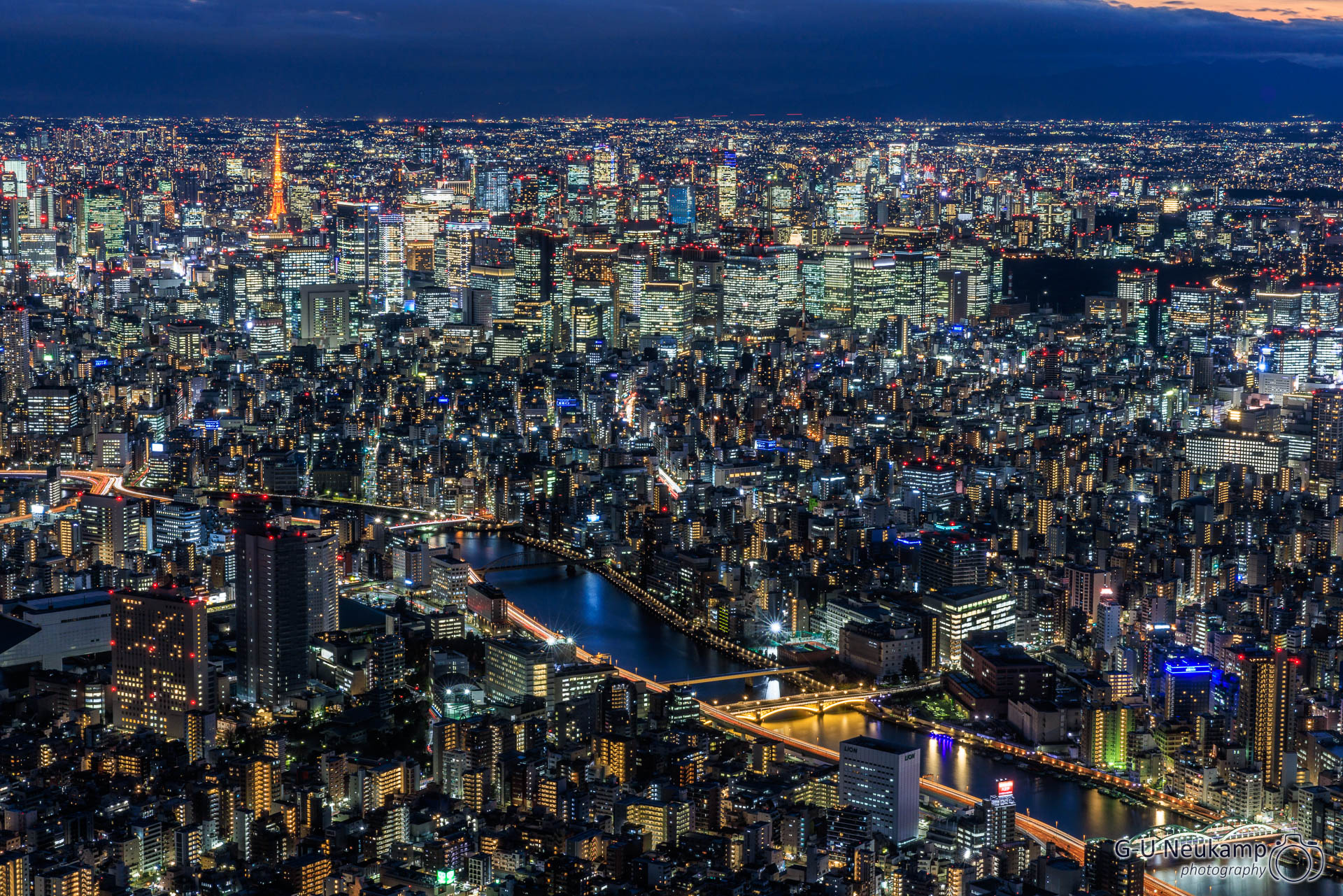
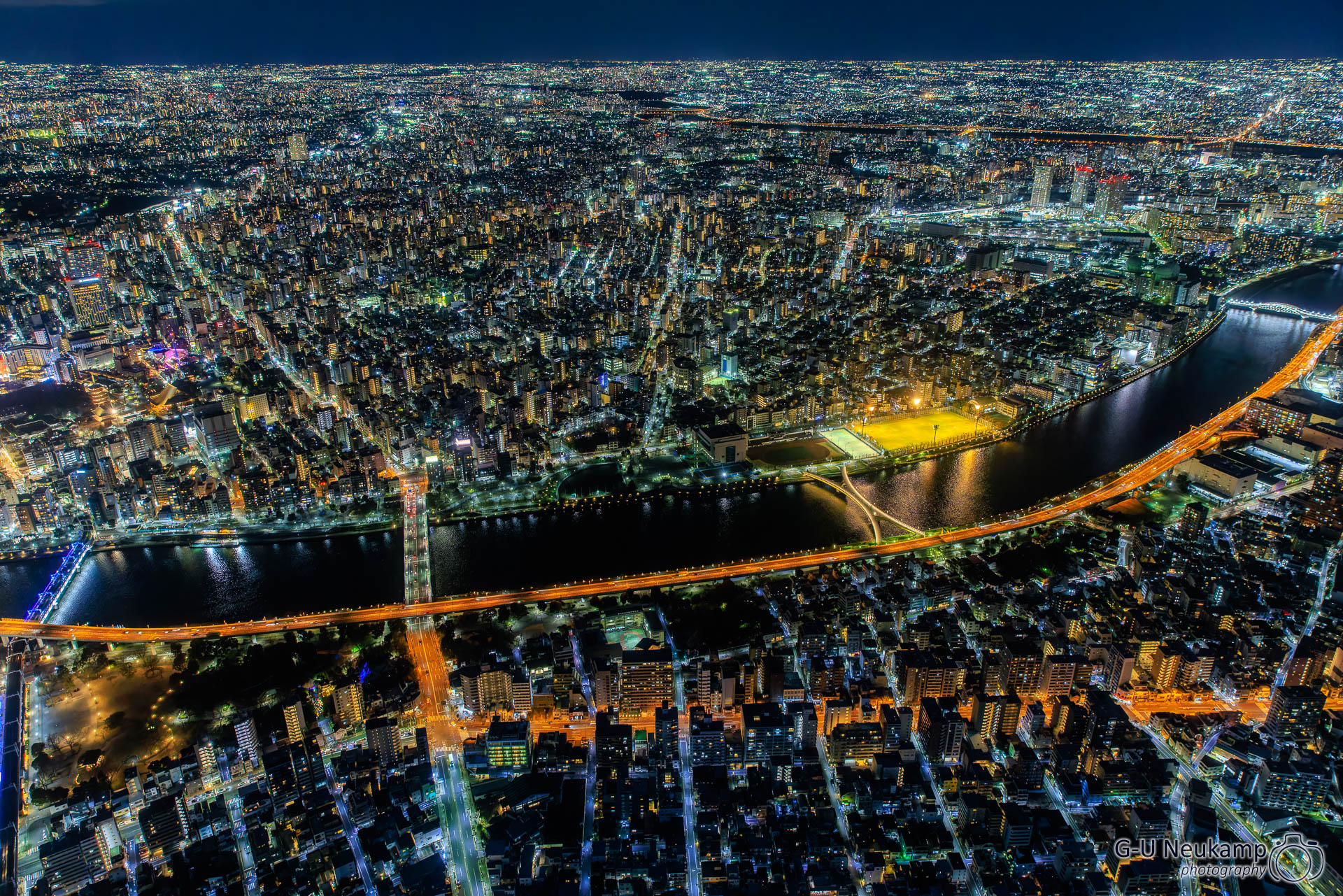
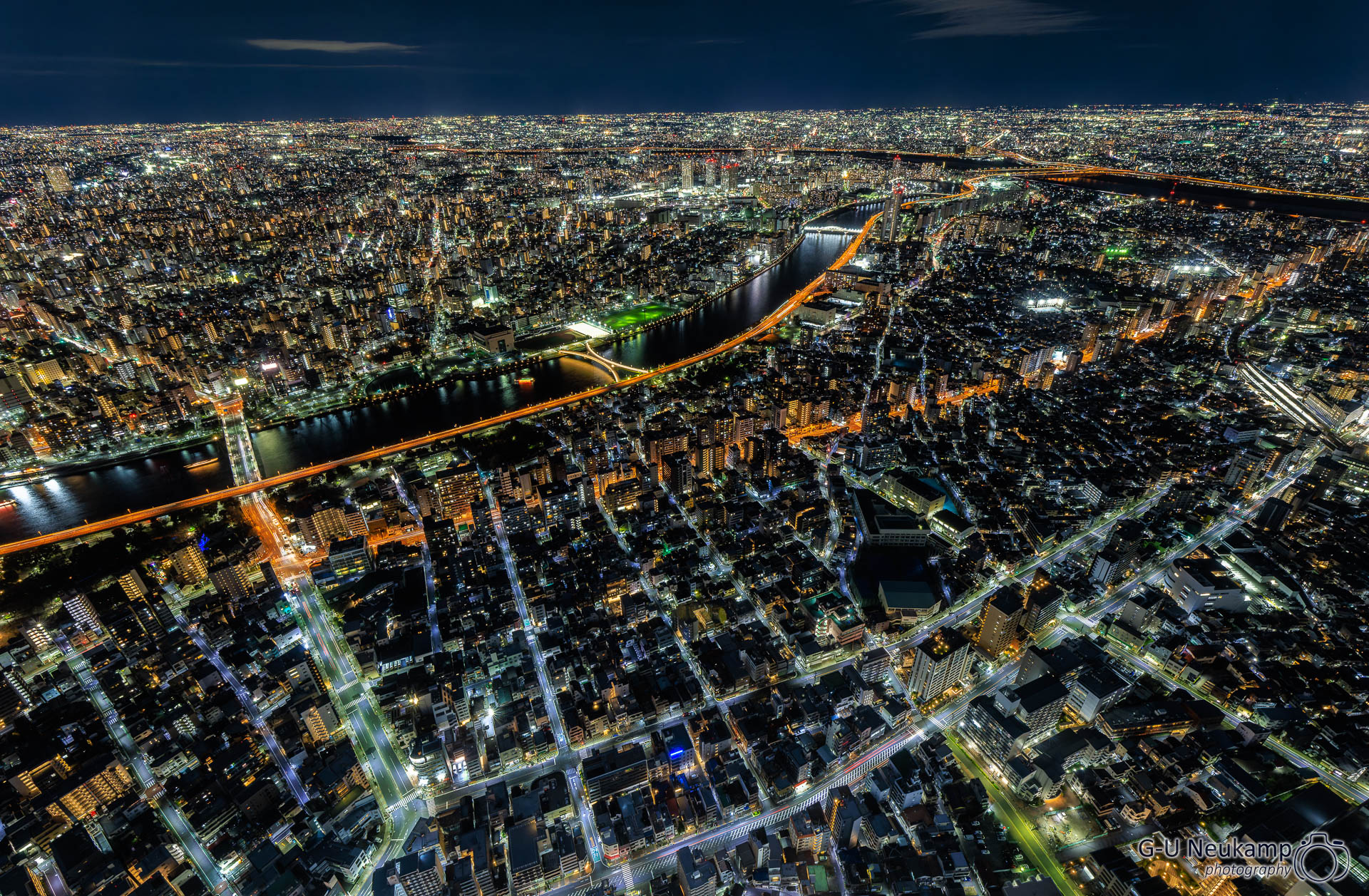
After leaving the Skytree, we walked back home to our hotel. This time, on Luise’s recommendation, we went to a nearby Izakaya for dinner. Izakayas are a kind of pub where the Japanese often meet after dinner for a “social gathering”. In fact, it is common in Japanese restaurants for people to leave right after their meal. However, the Izakayas also offer smaller portions of food - similar to Spanish tapas. We tried a few variations of these with Luise’s expert advice, and they were all very tasty.
